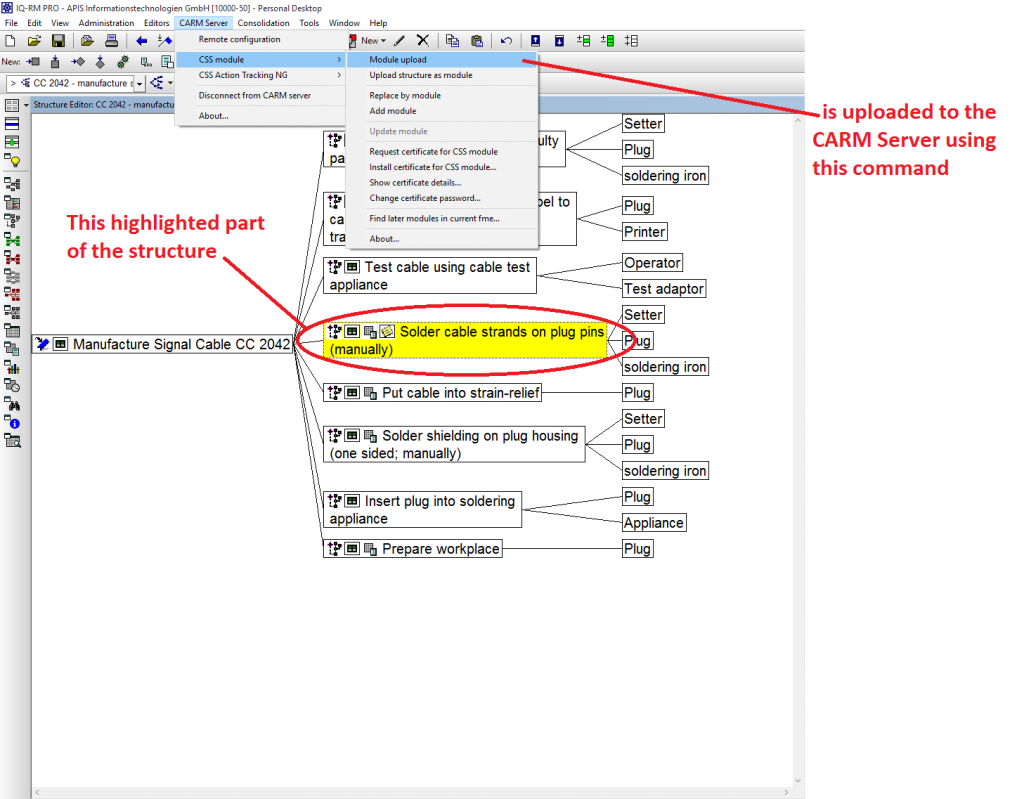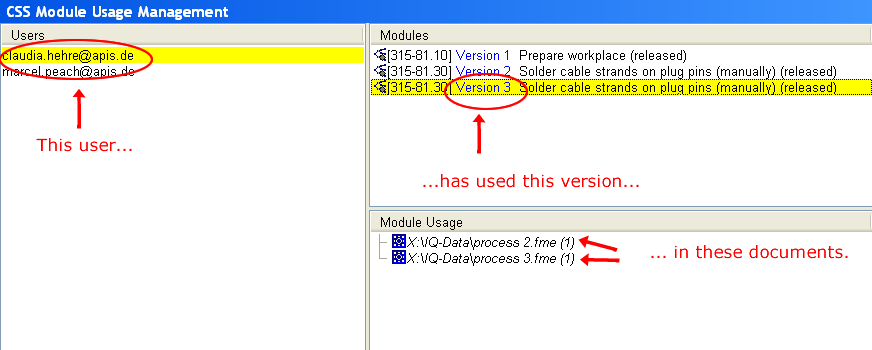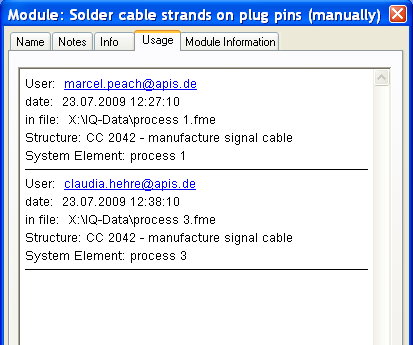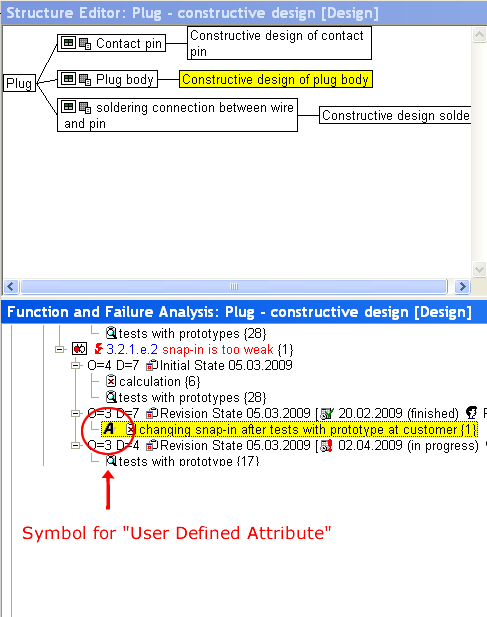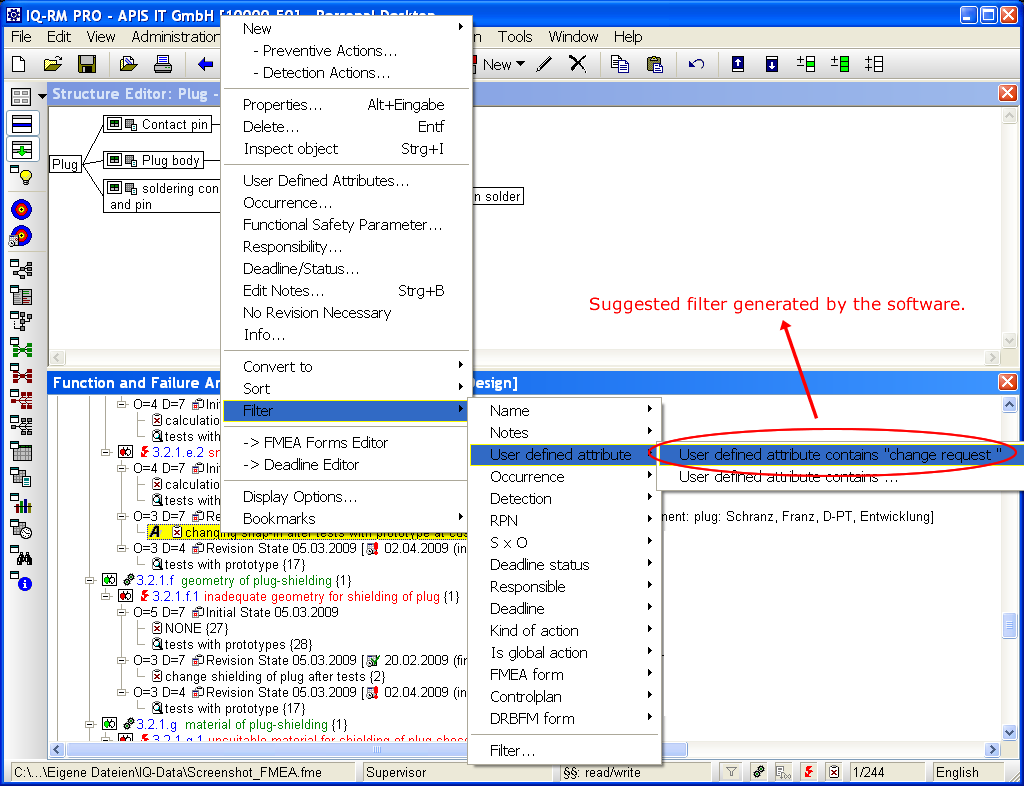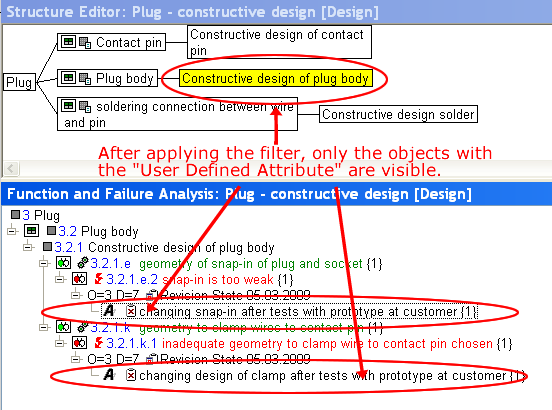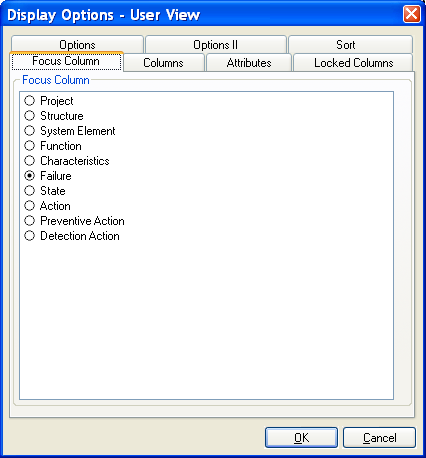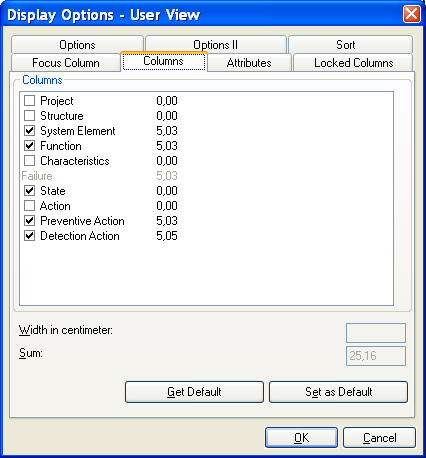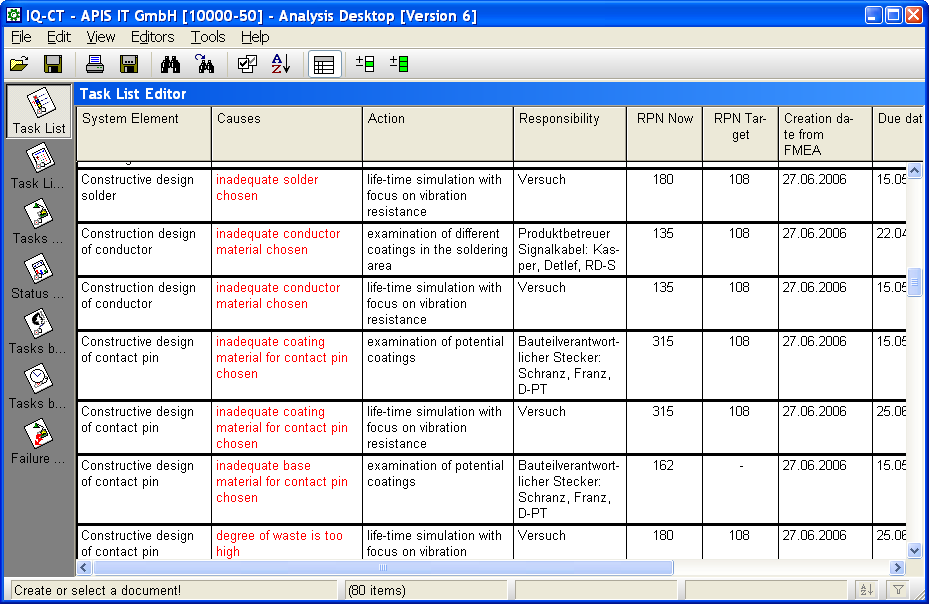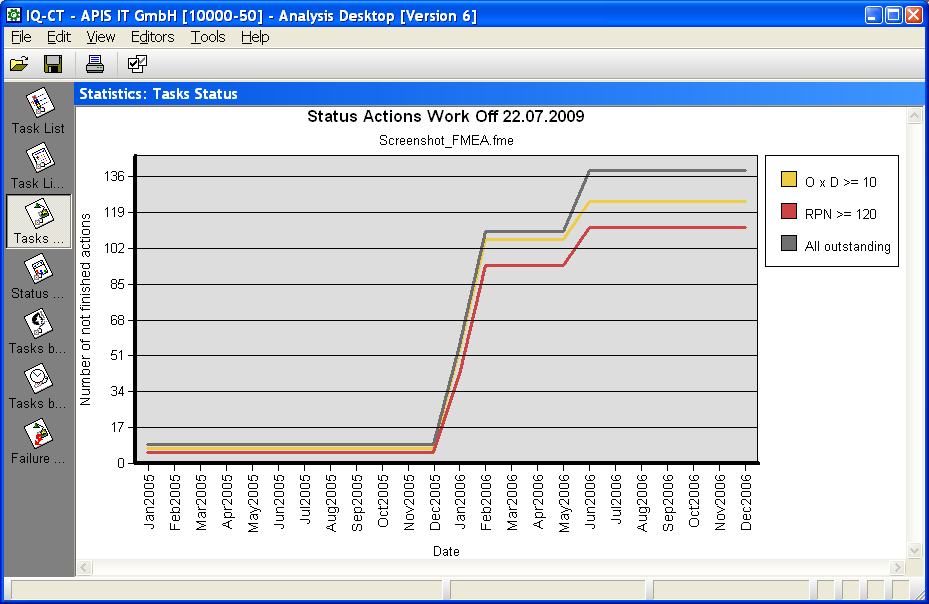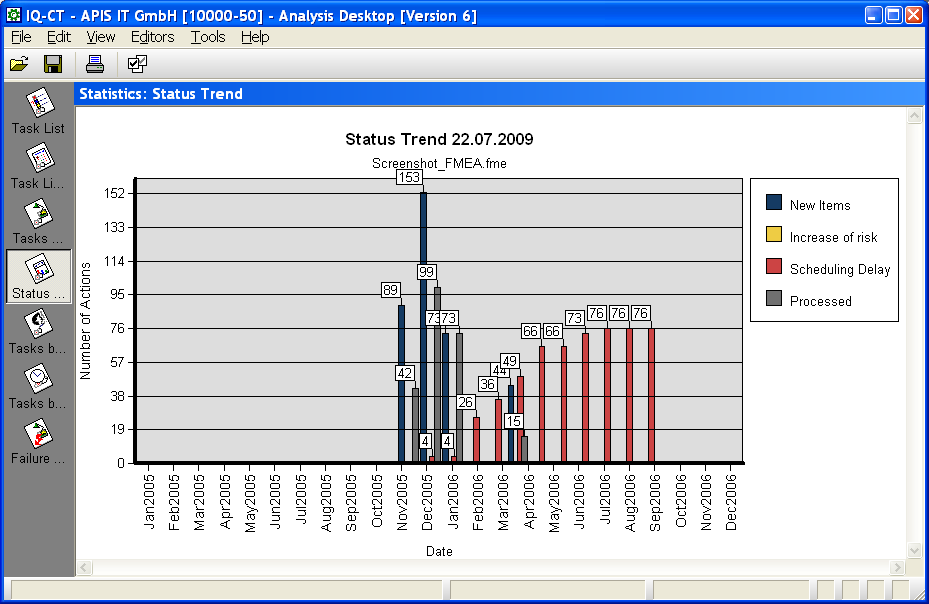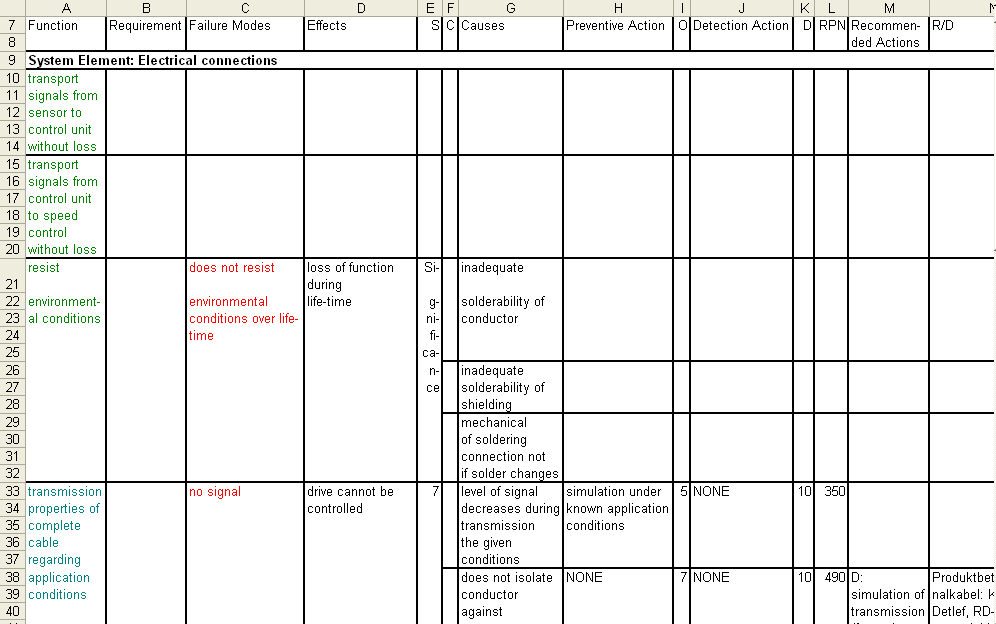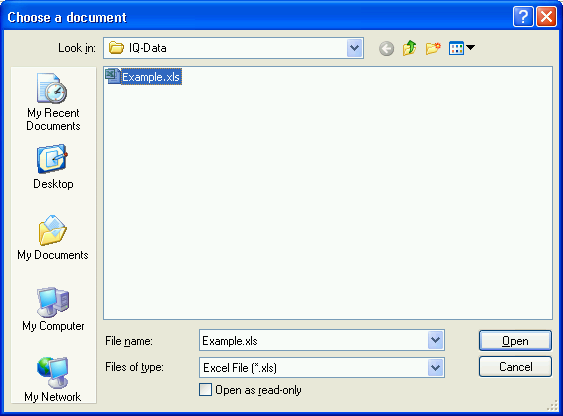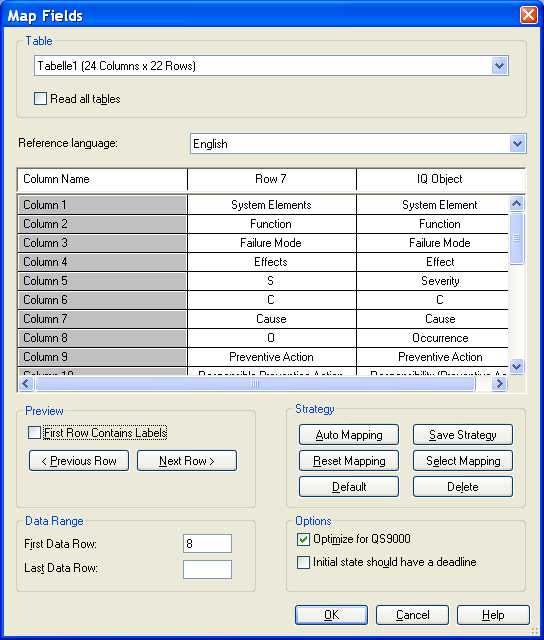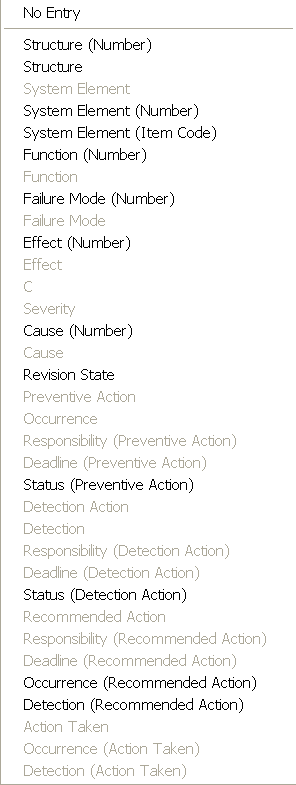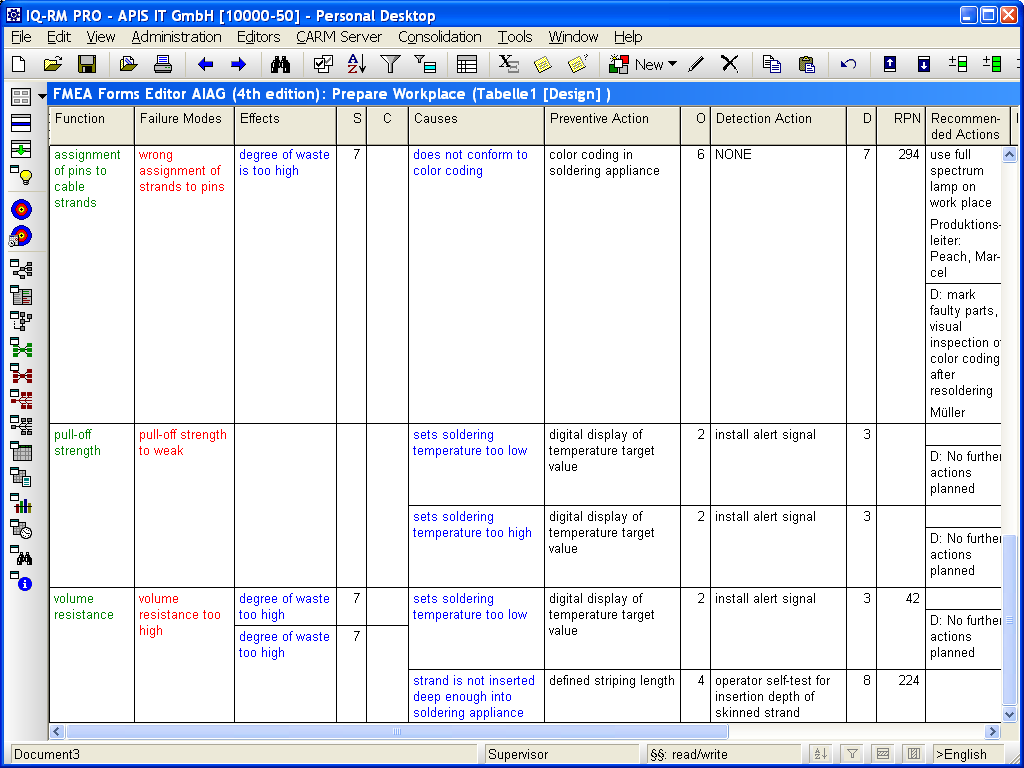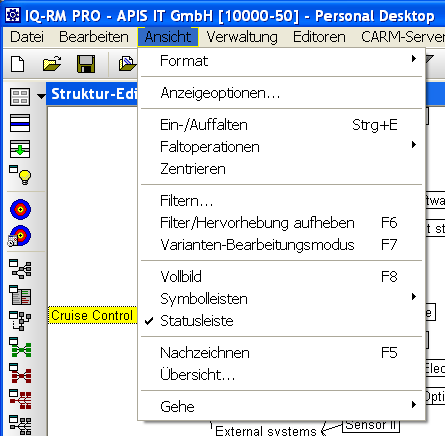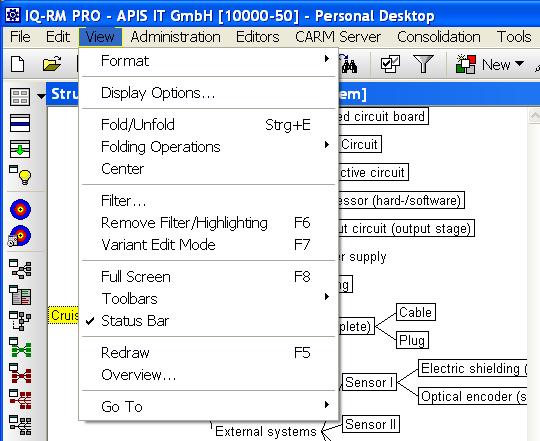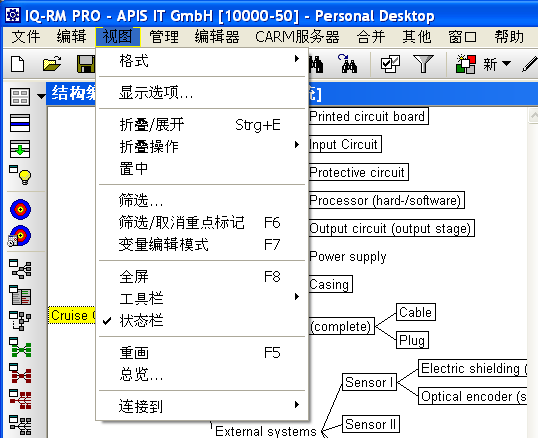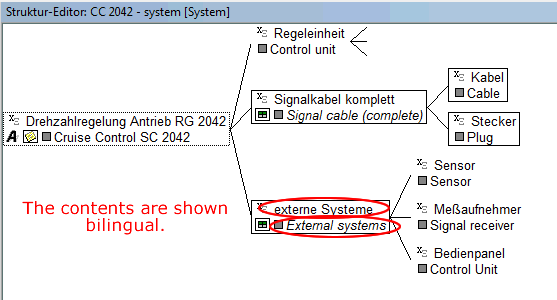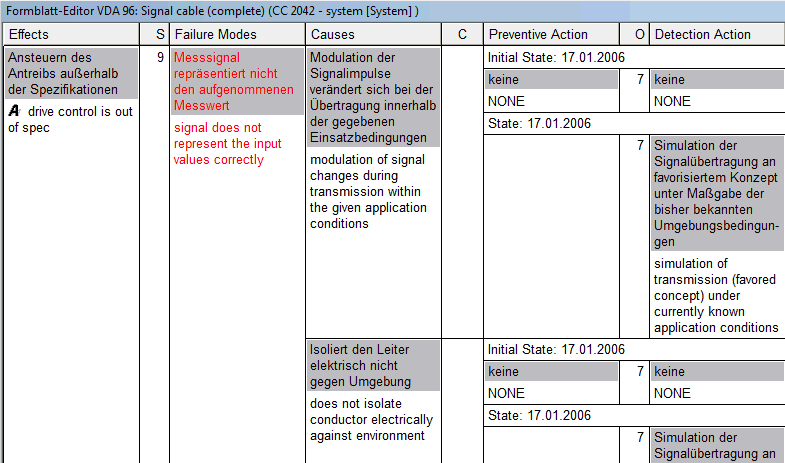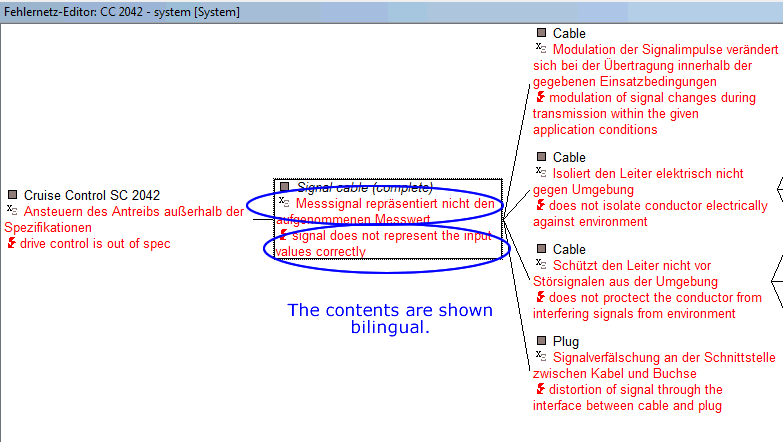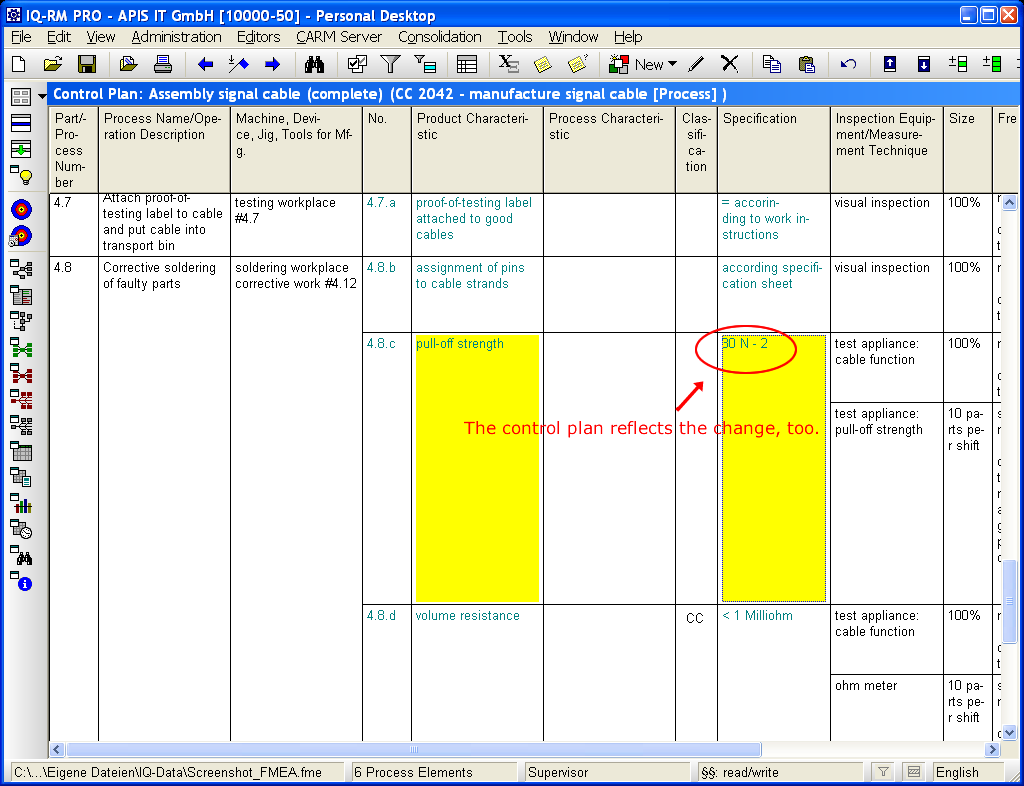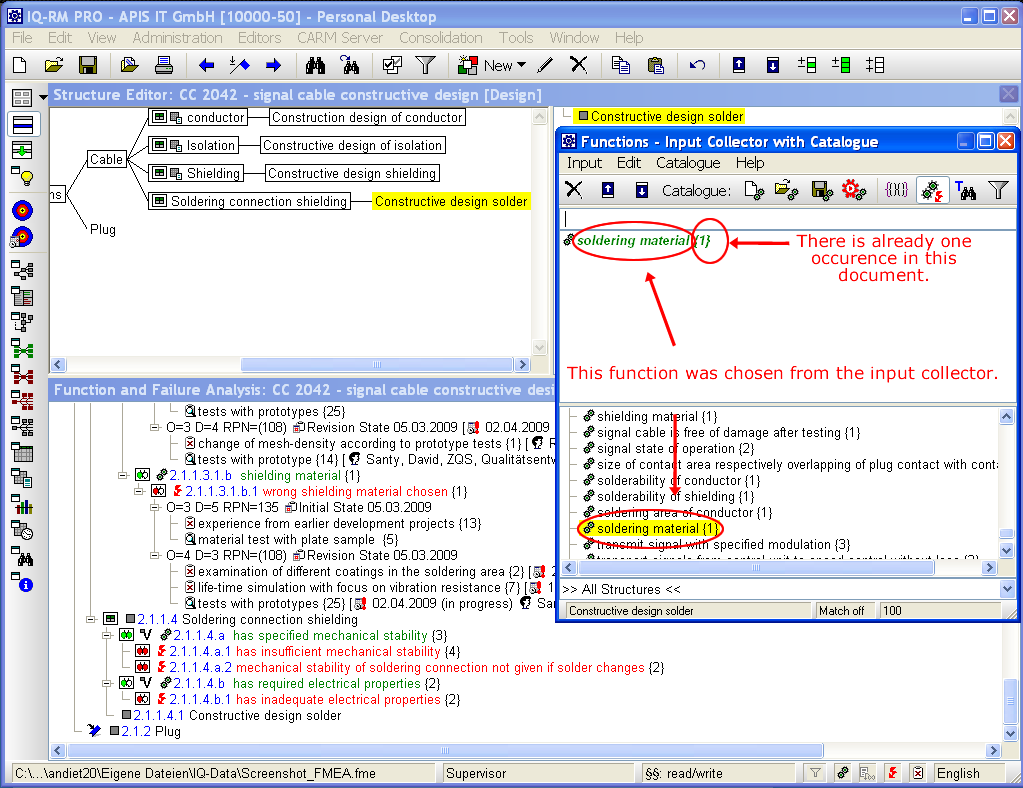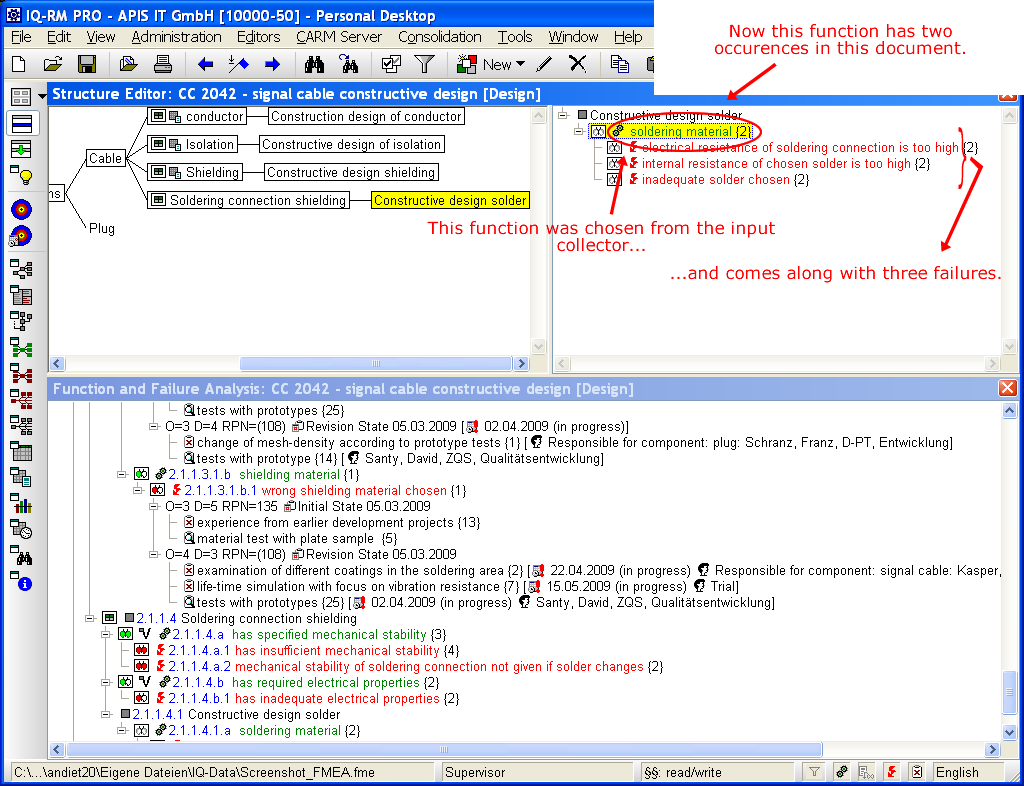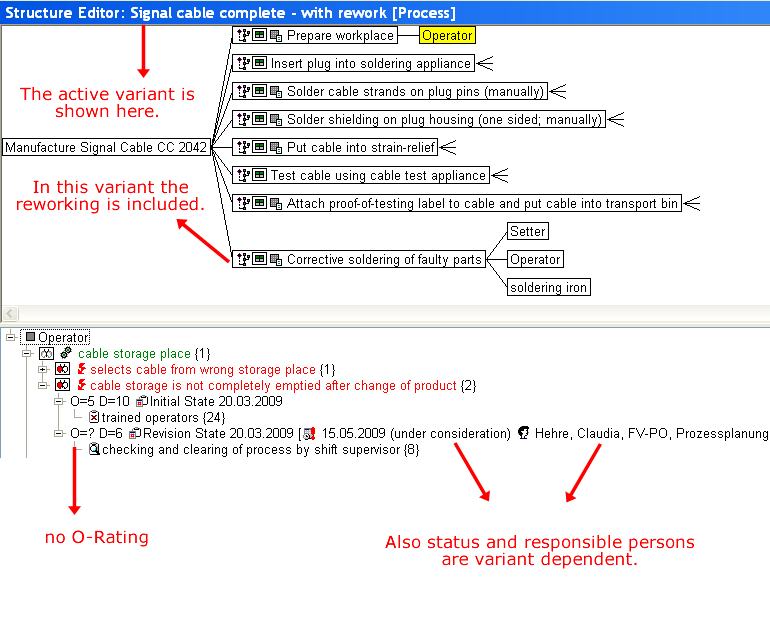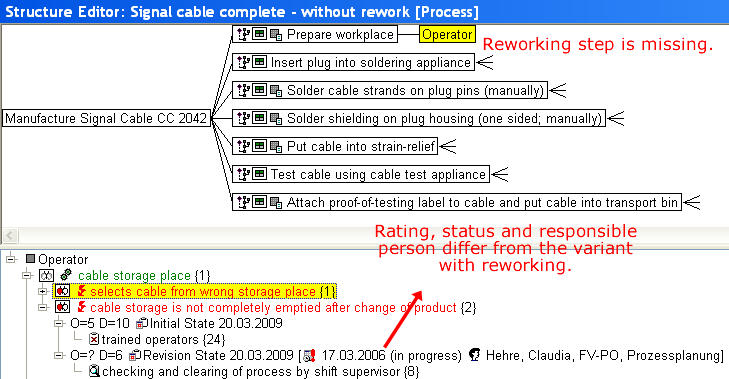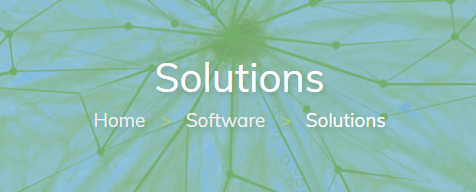
Your Needs Drive Our Solutions
From the beginning, APIS has consistently driven customer needs into our product capability and functionality. Take a look at some of the key messages we hear and how we’ve responded with solutions.
Advantages to using the APIS software.
-
I'm dissatisfied with unsystematic FMEA using Excel or Word
-
We provide reliable and comprehensible Risk Analyses with APIS IQ-Software
- FMEA participants can understand the risk analyses results even after a long period no matter how complex the analyzed system or process may be –> how?
- Cause and effect relationships are clearly visible and understandable –> how?
- Specialists focus on their actual work –> how?
- In addition to all current standards, company-specific standards and analyses are supported –> how?
-
-
I need to avoid redundant administration of identical data
-
We built our IQ-Software to enable consolidation and re-use of data
- APIS IQ-Software offers its tools with a consistent design and a common dataset. All pieces of information are simultaneously updated –> how?
- Product or process administration of variant data is only necessary when decidingdifferences within the variants –> how?
- Changes of data in centrally stored & administered knowledge modules can be transferred to local module copies –> how?
-
-
We want to present results, not pages of words or numbers
-
We built our IQ software so you can see informative results of your risk analysis
- Extensive reports can be generated automatically by a scheduled service and easily printed–> how?
- In addition to the depiction of FMEA data in standardized form sheets, informative graphs and statistics can support and augment your presentations –> how?
- FMEA data can easily be published (and shared) as HTML files for intranet applications –> how?
-
-
I need to ensure the completion of my tasks on time
-
We provide easy to use tools for the efficient management of deadlines
- A web interface enables centralized action tracking. If deadlines concerning actions are overdue, automated notifications via e-mail can be sent to the persons involved –> how?
- Standardized interfaces allow the processing of information on dates and deadlines into Microsoft Office applications –> how?
- Statistical analyses provides insightful project status information –> how?
-
-
I need to minimize my Total Cost of Ownership
-
We have created our software with your total-cost-effectiveness in mind
- Software rollout and maintenance are easy to manage –> how?
- Only one software product is necessary to create a complete risk analysis –> how?
- Existing analyses created in external systems such as EXCEL can be easily imported to APIS IQ-Software –> how?
- Team members are optimally assisted with their daily tasks by intelligent user support –> how?
- IQ-customization to meet your specific needs –> customization
-
-
Our teams must work on projects from multiple locations
-
We designed our IQ-Software to enable concurrent FMEA development
- Parallel project teamwork on a common data stock is possible without additional infrastructural effort –> how?
- FMEA data exchange between different systems ensured with standardized export/import formats –> how?
- The results of your FMEA analyses can be depicted in different internationally standardized layouts by simply switching between layout formats –> how?
- Comprehensive reports can be created for presentations or exchange between partner companies –> how?
-
-
Our teams and customers are global and multilingual
-
Global team interaction is not only supported, but deeply integral to the design of our IQ-Software
- The graphical user interface (GUI) language can be switched to one of the available languages during operation by just a few clicks –> how?
- Your analysis data can be maintained and presented in different languages –> how?
- Support of Asian fonts is guaranteed –> how?
- Standardized and multi-lingual catalogues ensure a common terminology –> how?
- The administration of multi-lingual contents is supported –> how?
- External translators can work with the data in a neutral format (EXCEL) –> how?
-
-
We want to manage data and knowledge from central locations
-
Knowledge-based working with APIS IQ-Software
- Action tracking is performed centrally with the help of web based forms –> how?
- The interface to centrally managed address books enables easy administration of user data –> how?
- Company-wide developed library of modules is centrally administered in the in-house network –> how?
- A powerful search engine enables to search FMEA data for different criteria –> how?
-
-
How can we better prepare for future requirements, mandatory documentation, and standards?
-
Protect your investments and be prepared for the future with APIS IQ-Software
- Integrated fault tree analyses (FTA) can be made for the considered systems –> how?
- Standardized export formats enable long-time storage of your data –> how?
- Since its market launch APIS IQ-Software has been claiming the top position in terms of technology by persistent development and adaptation of new standards –> how?
-
-
We need to demonstrate safety coverage for electric, electronic and electrically programmable systems
Client Server Solutions
CARM Server
Available Separately
The CARM Server is an active server that maintains a library of knowledge modules for distribution to users all around the world.
The CARM Server works similarly to a lending library where people can take out books (“knowledge modules” or “modules” for short) and the librarian writes down the name and address of every user and the modules they have taken home and the date of the loan.
Now suppose you have taken a thriller from the library and at the time you start reading it, the author of the thriller has come up with a new and much better ending.
This is where the analogy to a library breaks down; because with a library book, you are stuck. A new edition has to be printed, bought by the library and if you are lucky you somehow learn that this new edition exists and you can reread the book.
Not so with the CARM Server! The CARM Server notifies all clients that have downloaded a specific module of new versions of the module as soon as the new module arrives. Once the client receives this notification, there are several options: the client can decide to replace their version of the module with the new version, or keep the old version. The server can also be set up in such a way that replacement is automatic and the clients do not have any say in this process.
More specifically, here is a typical scenario for the CARM Server:
- User A provides an initial analysis of a module in the usual way with the APIS client software.
- User A now uploads this module to the server. Similar to the different departments in a library, the modules can be arranged in categories for easier reference. Also, the server can be configured so that the server administrator is able to manage the release process of modules.
- Users B, C, D… download the current released version of the module into their own documents to integrate it into their analysis. The server remembers the users as well as the documents and structures where the modules were integrated.
- User A has come up with new ideas concerning the module and uploads a new version to the server.
- The server informs all users of the module of the existence of the new version so that they can replace the existing old version with the new one (“pull”).
- Alternatively, the server can automatically replace old versions of the module with new ones in the client documents (“push”). This replacement process is customizable.
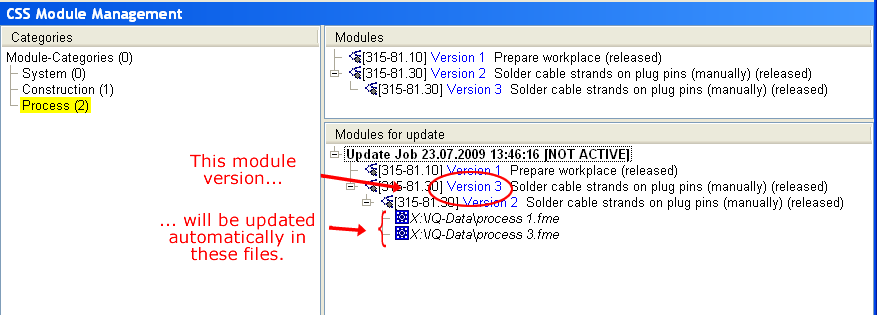
Depending on the way the server is set up, notifications may only be sent when the module is revised and released by the server administrator.
Customization
Customer Specific Changes to the Product
The software can be customized in two ways:
- by adding customer specific data and views
- by removing (hiding) software functionality
Adding Customer Specific Data & Views
This can be done by using:
- Notes categories
- User Defined Attributes
- User Views
Notes Categories
Available in all extension stages of IQ-Software
Notes can be added to every object of the data model. As the notes are based on HTML, rich text as well as links to other documents (including pictures, sound files, videos) can be part of the notes. Notes can, of course, also be translated to other document languages.
In addition, the user can define notes categories. Using these, notes which are only for internal use and which are not visible for certain user groups can be added to the data.
The owner of the documents controls the notes category to be used when the document is opened (and printed or exported to HTML).
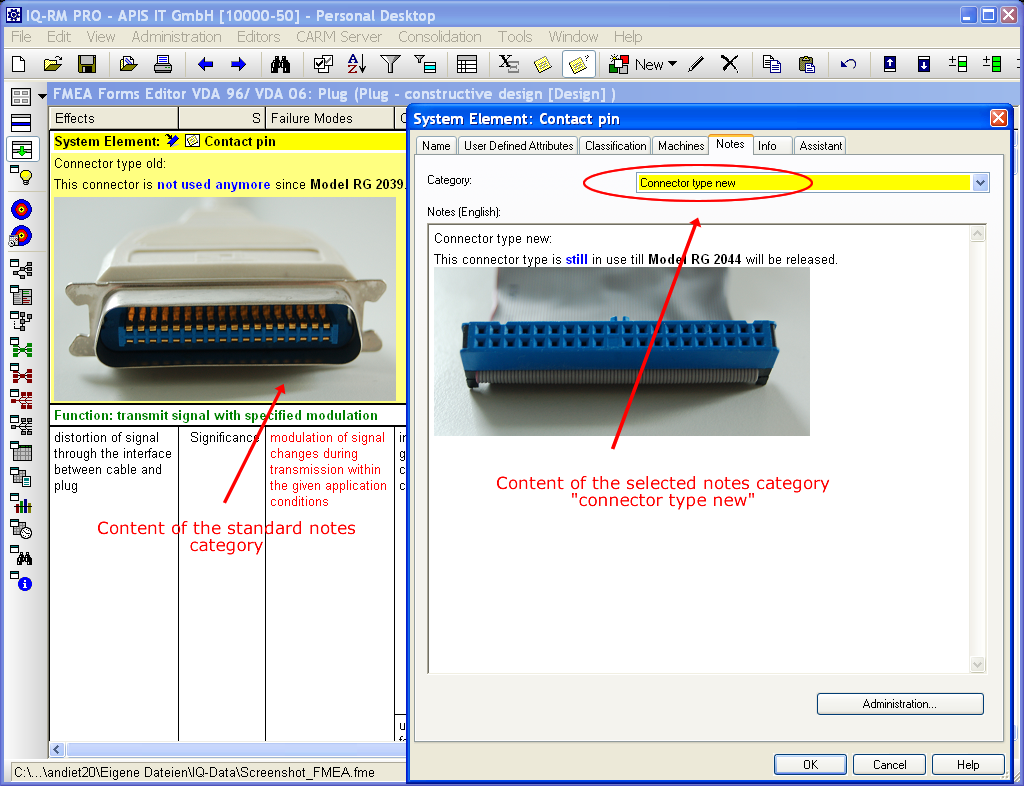
User Defined Attributes
Available in all extension stages of IQ-Software
The data model of APIS IQ-Software is very sophisticated and supports a huge number of complex filters. However, not all information aspects which are relevant for a specific company can be anticipated by the model. These aspects can be introduced into the data model via user defined attributes.
Every object of the data model can be attributed with an unlimited number of these user defined attributes. The attributes can be displayed (and therefore also printed) in the various editors of the software and they can be part of the search filters (queries) of the IQ-Explorer. Using user defined attributes can be compared to tagging web sites in a browser to add user generated contents.
The following figures show two “tagged” actions plus an auto filter that uses these tags.
User Views
Available in all extension stages of IQ-Software
User Views let the user create forms that display the data of the model in ways which are not envisioned by standardized forms (e.g. the FMEA forms according to AIAG).
The following figure displays a view which shows the failures per structure and the actions defined for the failures.
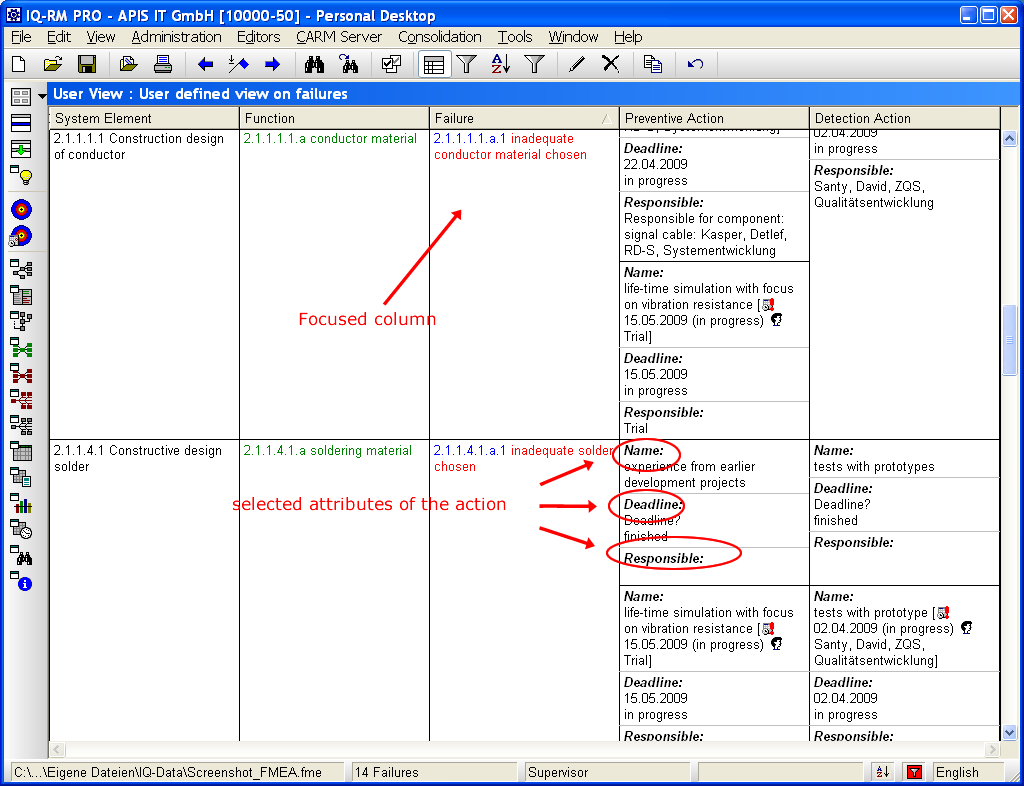
As the standard forms know nothing about structures and always show three levels of the failure net, such a view has to be specifically defined. The following figures show how this is done.
3. Select the attributes to be displayed and their layout (horizontal or vertical)
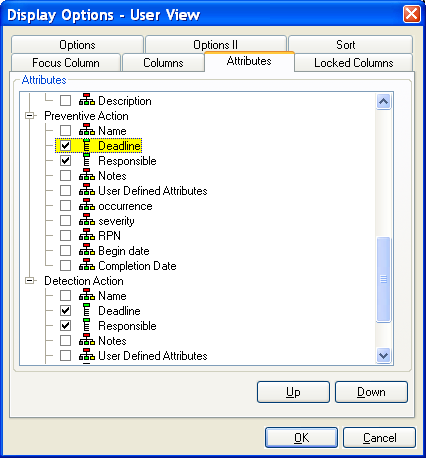
How to Hide Software Features
There is no feature in the software which was not at one time required by one or more customers. Due to the large customer base of APIS IQ-Software, a lot of features have been added during the last 16 years. Although vitally important for the requestor, not every feature is meaningful for every user of IQ-Software. Therefore we provided two ways to exclude unwanted program components:
- the Customization Manager
- the Customized Tools
Customization Manager
Available in all extension stages of IQ-Software
The Customization Manager lets you define different configurations of the software by specifying the editors that are included in the configuration as well as the commands that the editor is to support in the configuration.
Customized Tools
Available in all extension stages of IQ-Software
Customized Tools (CT) are standalone applications developed and maintained by APIS. CT are targeted for specific user groups and often allow these groups only access to a limited set of objects of the underlying data model and a limited set of operations that can be performed.
The following customized tools are available:
- CT Form: Provides a form sheet editor similar to EXCEL but with improved user friendliness as well as an integrated statistics.
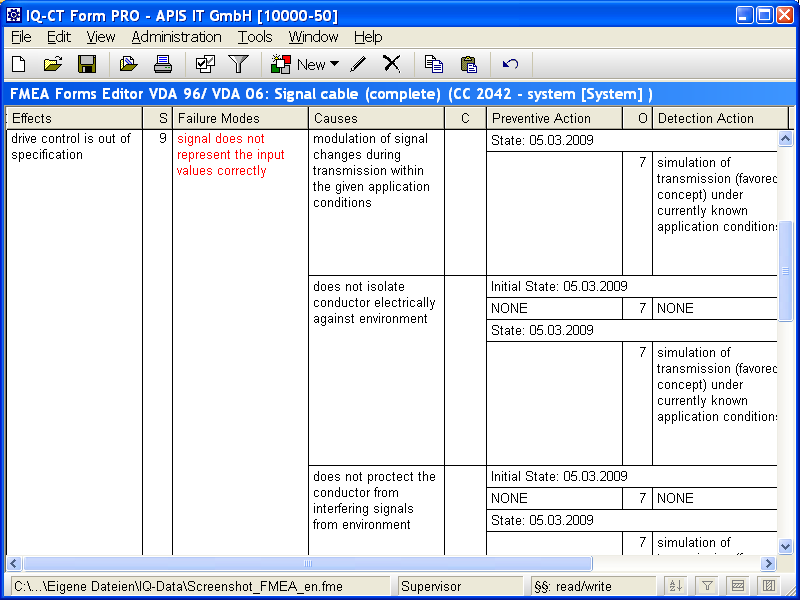
- CT Analysis Desktop: Similar to CT Form with additional reports for tracking the project’s progress. This CT is targeted at members of management.
- CT Action: Shows the status of actions and allows only changes in action status; targeted at persons in charge of actions
Data Exchange With XML
Available in all extension stages of IQ-Software
Open Standards allow users to work with data from different applications. Using XML format is a state-of-the-art method for inter-application communication. APIS IQ-Software offers an extensive XML interface which converts text and contextual information into an open format. This interface works in both directions so that you can both export data into XML format as well as import XML data into IQ-Software format (e.g. fme). The interface also allows data to be stored and archived long term in simple text file. These files are self contained and can be read/interpreted using a number of operating systems and application software.
APIS IQ-Software supports two versions of XML-Specifications (DTD = Document Type Definition). The first is an official and open standard. It was created by a consortium of important manufacturers. This Version is msrfmea_2_1_2 (see msrfmea_2_1_2.ml.dtd) and is supported by all versions of APIS IQ-Software from version V5.0d onwards. The second format is a draft version which is largely compatible to 2_1_2 but also contains some extensions and adjustments to newer versions of APIS IQ-Software. The following table shows the XML-specifications and their corresponding versions of APIS IQ-Software (click on the version you need to download the specification and documentation):
| IQ-Software | V5.0d/e and V5.1 | V6.0 | V6.5 |
|---|---|---|---|
| MSR-Format 2.1.2 | Import/Export | Import/Export | Import/Export |
| Draft Format 2.2.0 | Import | Import/Export | Import |
| Draft Format 2.2.1 | Import | Import | Import/Export |
Editors And The Model
APIS IQ-Software lets you model, view, print and analyze complex systems and processes in many ways.
Structure Tree
Modeling the system/process as a graphical tree offers unparalleled lucidity. For large systems, folding the parts of the tree that currently are not under consideration lets the team focus more effectively on the relevant items. of the tree can optionally be displayed in a separate window.
Process Flow
Processes are best created using a . Icons that show the type of the process can be attached to every item in the process flow. Selected regions of the diagram can be drawn with colored background. For every process step, the process characteristics are shown in a table which is integrated in the flow diagram.
Functional Interdependence
Analyzing the functional relationships becomes more and more important for risk analysis with the increasing complexity of modern systems. APIS IQ-Software uses the function net for creating these relationships. In addition to the relations between functions, the function net editor can also display various context data for ease of understanding.
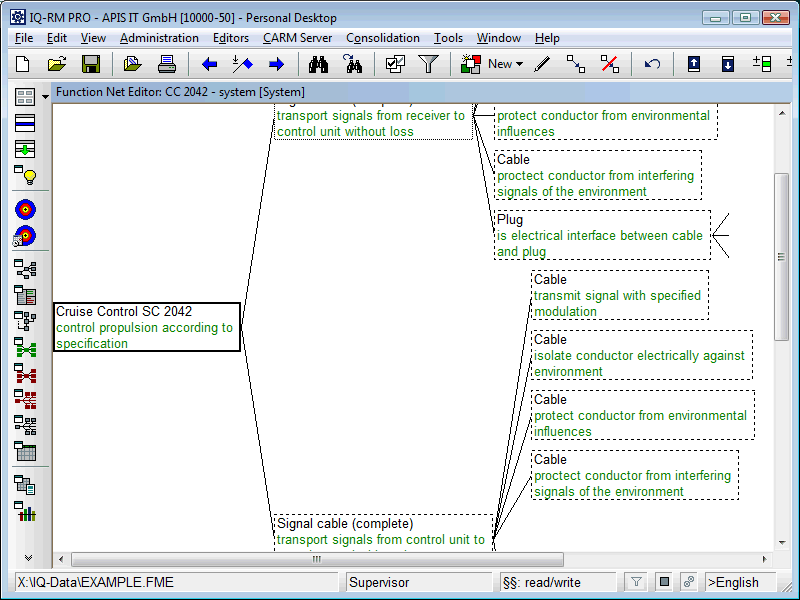
Failure Interdependence
Identifying the relationship between failures is one of the most important tasks of risk analysis. APIS IQ-Software uses the failure net for creating these relationships. If a structure and Functional Analysis was performed, the failure net can also automatically be derived from the function net. In addition to the relations among failures, the failure net editor can also display various context data for ease of understanding.
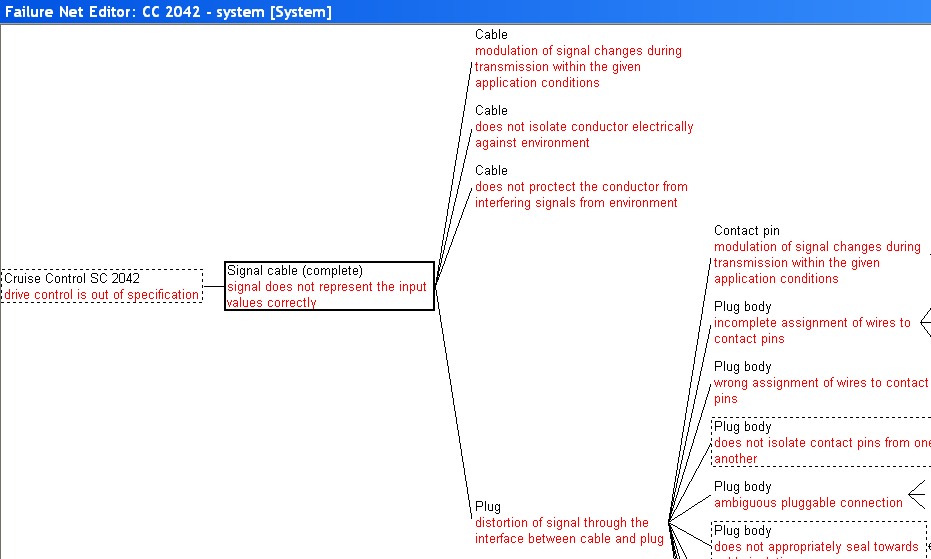
FMEA Form – Defining Actions
Although actions can also be defined in other editors, the is the most popular editor for defining actions. But there is no such thing as the FMEA form. Instead, many countries (USA, Germany, Japan) and often companies also define their own form layout. APIS IQ-Software can also cope with this situation.
The form is automatically created based on the model as described above. With a single keystroke, different layouts (eg. or ) can be used, not only for viewing and printing the data but also for directly entering the data.
It is also possible to open an empty form in any of the supported layouts and to directly enter the data into this form, but with a support and user friendliness which greatly surpasses that of EXCEL or any other tool for filling in a tabular form.
The statistics editor of APIS IQ-Software provides data and documents for controlling every phase of the analysis process and presenting the results to management.
Pareto Analysis
The allows you to focus on those areas of the system/process where the most critical risk is to be expected. This analysis is linked to the rest of the model; so a single mouse click on a bar in a bar chart will for example open the FMEA form where the corresponding risk is described.
Action Tracking
is a special statistical analysis that shows the progress of task completion over time.
Excel Import
Import of FMEA Forms From Spreadsheets (e.g. Excel)
Available in all extension stages of IQ-Software
You already have a number of FMEA forms which were built with a spreadsheet program (e.g. excel Figure 1.) and you want to import these forms without additional effort into APIS IQ-Software?
IQ-FMEA software offers import functionality for this. You simply open the xls file (Figure 3) through the file menu (Figure 2) and then use the import dialogue of the APIS IQ-Software to define the interpretation of the data in the table. This is done by assigning the columns of the table to the corresponding IQ-objects by selecting the IQ-object for a column from a provided list of objects (Figure 4).
Fault Tree Analysis
Available in all extension stages of IQ-Software
For detailed predictions about the failure probability of a system a fault tree analysis is required. APIS IQ-Software supports fault tree analysis according to DIN 25424.
Fault trees are most easily created based on failure nets. A failure net is transformed to a fault tree by changing, inserting or removing logic gates. It is also possible to create a fault tree without any preexisiting failure net.
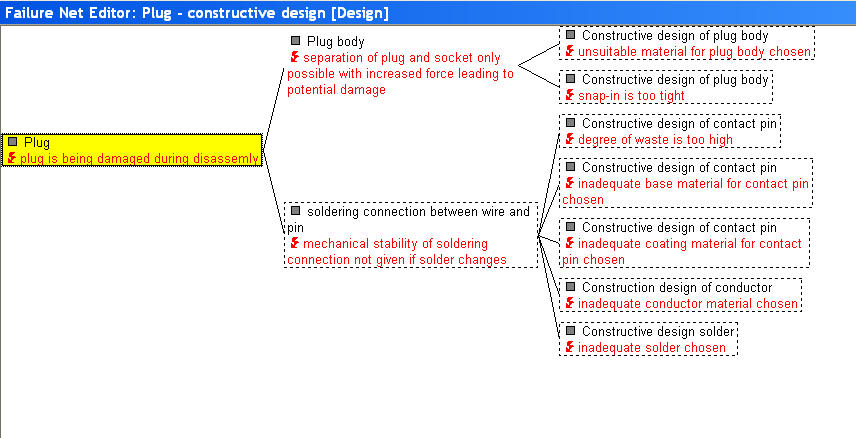
Based on the above failure net the IQ-Software creates the following Fault Tree:
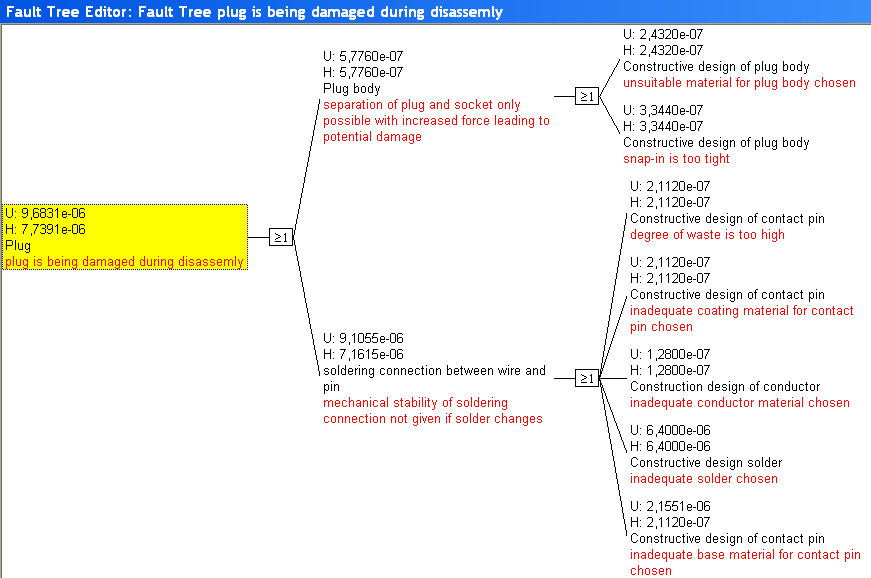
If necessary, the gates can be changed. A possible result could be this Changed Fault Tree:
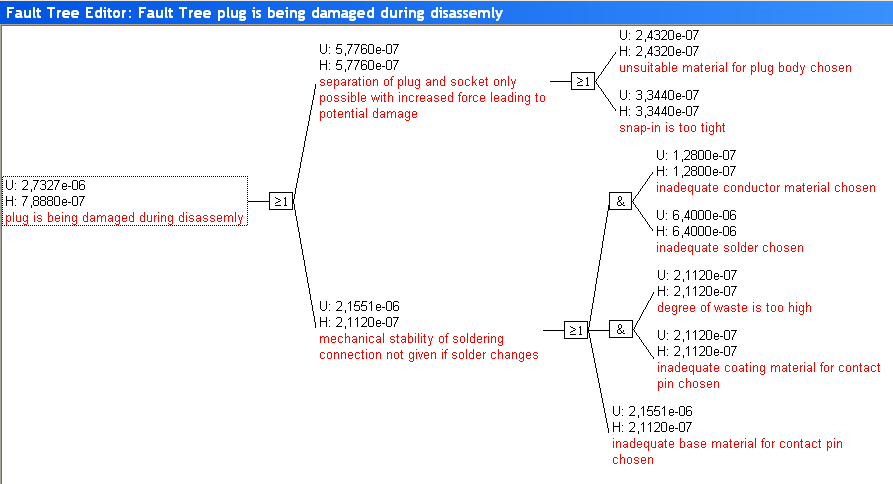
The evaluation of the information in a fault tree according to DIN 25424 produces values for unavailability and frequency of failure.
The display of the fault tree as a minimal cut set is also possible.

The values which are the basis for the calculation are input in the properties dialogue:
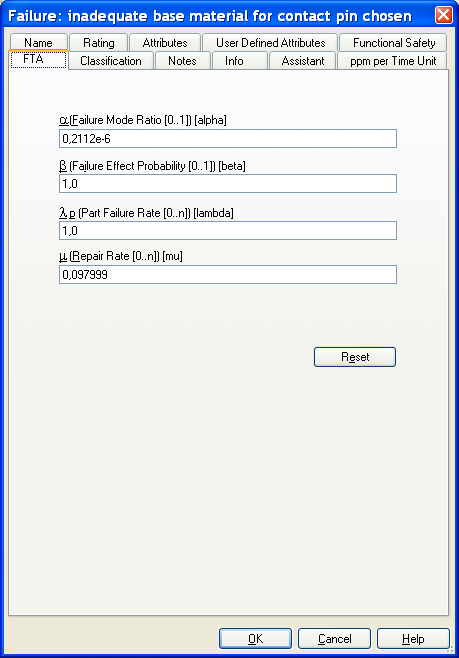
In addition, APIS IQ-Software offers a fault tree analysis based on fault rates in ppm values.
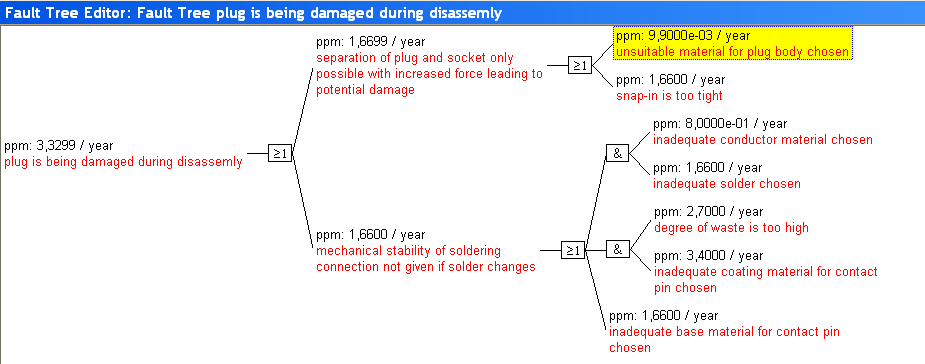
Functional Safety According to IEC 61508 IEC 26262
Available for Pro Versions of IQ-Software
The quantitative analysis for the functional safety of a system is becoming more and more important. Based on failure net methods, APIS IQ-Software offers to evaluate and calculate the necessary criteria.
For the top level failures of a system, IQ-Software calculates the norm specific values, for example PFH value (Probability of dangerous Failure per Hour: Average probability of failure of a safety function working in high demand or continuous mode of operation) or SFF value (Safe Failure Fraction: Percentage part of safe failures and dangerous detected failures of a safety function or a subsystem related to all failures) for IEC 61508. The computed values are compared to the specifications and divergences that are reported functional safety.
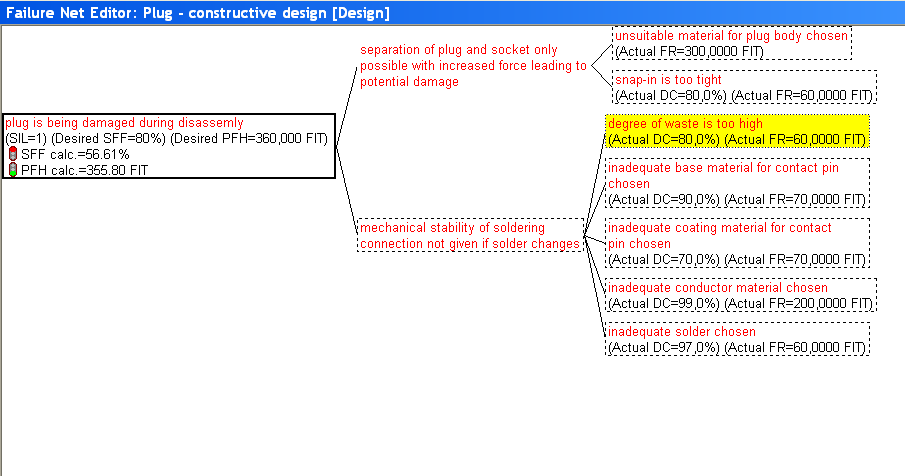
The classification of top failures according to risk categories ((Automotive) Safety Integrity Level ((A)SIL). The higher the (A)SIL of a safety-related system, the lower the probability that it will not perform the required safety functions) as well as their diagnostic coverage (DC) and the failure rate (FIT value) of the basic failures can be input in the Properties Dialogue or the Object Inspector.
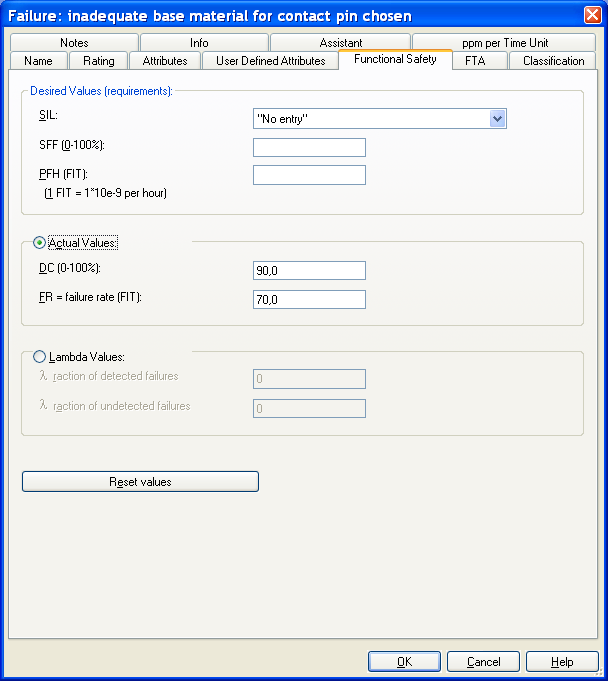
iCalendar
Available in all IQ-Software products
iCalendar is a standardized file format which allows internet users to send meeting requests and tasks to other internet users, via email, or sharing files with an .ics extension.
IQ-Software creates iCalendar files based on the tasks in a document and emails them to the responsible persons. The notification mail contains a description of the tasks and has an attached iCalendar file. This can then be imported into Outlook (MS) or Lightning (Thunderbird).

Intelligent User Support
The Assistant
Available in all extension stages of IQ-Software
The assistant offers an integrated method of support by evaluating the current state of your risk analysis and offering proposals for necessary completions. When the assistant is active every object which needs further data input from the user is shown with an “under construction” sign.
Double clicking this symbol opens the properties dialog for the object on the assistance page. On this page all proposals generated by the Assistant for this object are listed.
Simply by clicking on a proposal, the user can trigger the equivalent action so that detailed knowledge of the software is not necessary for this step.
The assistant is rule driven; the underlying rules can be adapted to the needs of your company so that only relevant proposals are made by the assistant.
Computer Based Training With Learning Units
Not only provide knowledge about the use of the APIS IQ-Software but also general information about the development of the FMEA. The different topics are explained and illustrated in a compact and understandable way.
By going through the learning units even the inexperienced user learns step by step how to build a system-, design- or process FMEA with the IQ-Software. Advanced users specifically use learning units to complement their knowledge.
LDAP
Available in all extension stages of IQ-Software
The LDAP support of APIS IQ-Software provides easy import of contact data of persons from the company’s central directory. Thus only one place to maintain addresses is needed (“single point of administration”). The directory is viewed as a tree structure so it is easy to find one’s way in large address spaces.
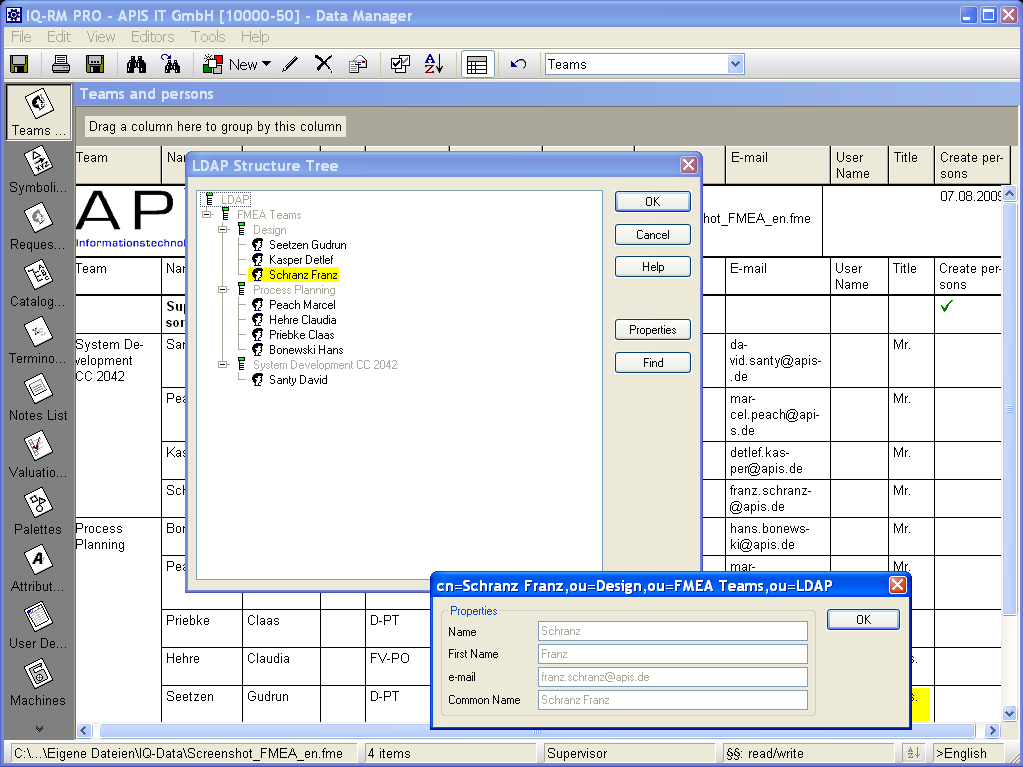
Long Term Data Storage
Available in all extension stages of IQ-Software
APIS IQ-Software offers several possibilities for long time data archiving. Among these are the various export facilities as well as the Presentation Print using a PDF printer driver, and the Web Publisher which produces HTML documents. Both formats can be created automatically using the CSA Web Publisher service of the CARM-Server.
All of these formats can be viewed with third party tools (PDF viewers, web browsers), but it is not possible to automatically reconstruct the internal data model and therefore the interrelations between the data objects (eg. what are the causes of a certain failure?).
Therefore, IQ-Software offers an XML export which integrates all requirements: long term data storage plus the possibility to automatically reconstruct the data model. XML as a simple text format is future proof. So the interpretation of contents should be guaranteed for the foreseeable future. It will be possible to interpret this data even if the provider of the operating system has gone out of business.
Last but not least IQ-Software takes benefit from the document-centered approach when it comes to archiving the information. Since the documents (extension “.fme”) are self-contained information units that require no additional IT infrastructure (as, for example, a database system) they can easily be managed by a document management system. Also, any standard backup strategy is supported.
Mechatronics FMEA
Available in all extension stages of the FMEA
Mechatronics Systems differ from conventional technical systems; to a certain degree, these systems allow for self-diagnoses and self-repair. They have built-in detection mechanisms for and reaction mechanisms to specific failures and can so often guarantee a failsafe error handling and increases operational readiness of the system under consideration.
Often, the specific operating conditions (or states) of the system must be taken into account for failsafe engineering (e.g. is the vehicle being accelerated or decelerated, is it driving straight or in a narrow curve, is the road surface slippery or icy…).
Risk analysis for Mechatronic systems is not in the scope of the classical FMEA analysis. New concepts and features have to be used to cope with these problems.
The description of the complex interrelationships of Mechatronics systems is done in the failure net of the APIS IQ-Software.
In the following example there is an analysis of how a failure of a sensor (“wrong signal”) with two causes has effects on a Mechatronics system with two different operating conditions (operating and passive state).
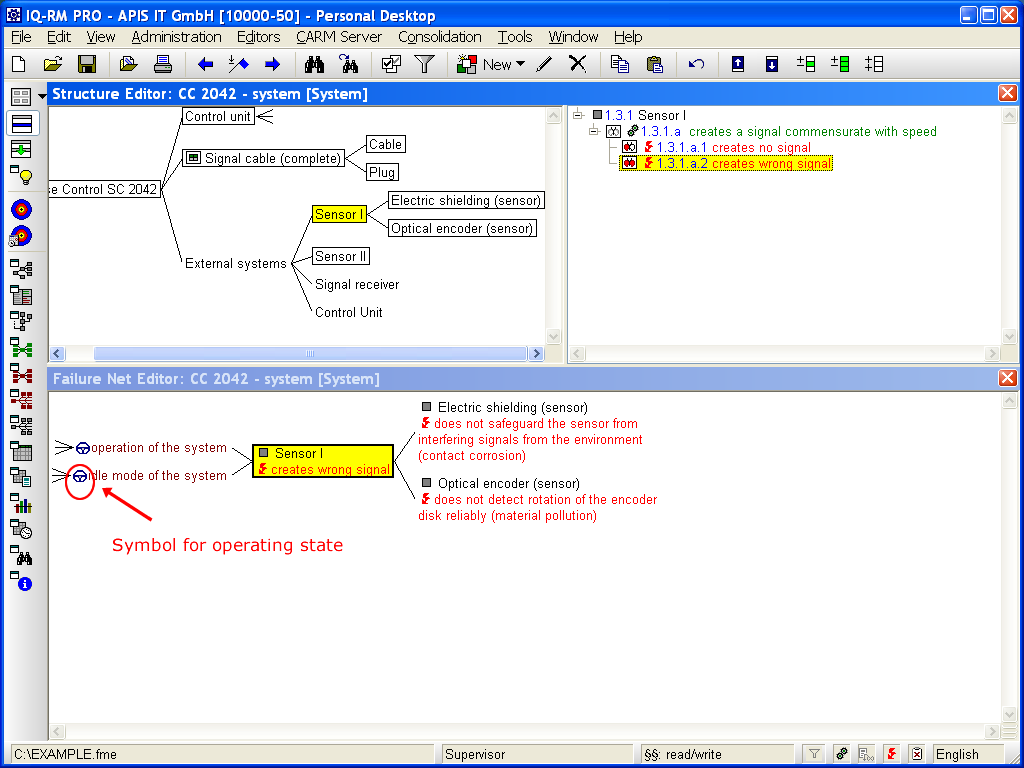
If a failure occurs during the operation state of the system there are two alternative continuation paths. One path with failure detection and another path without failure detection.
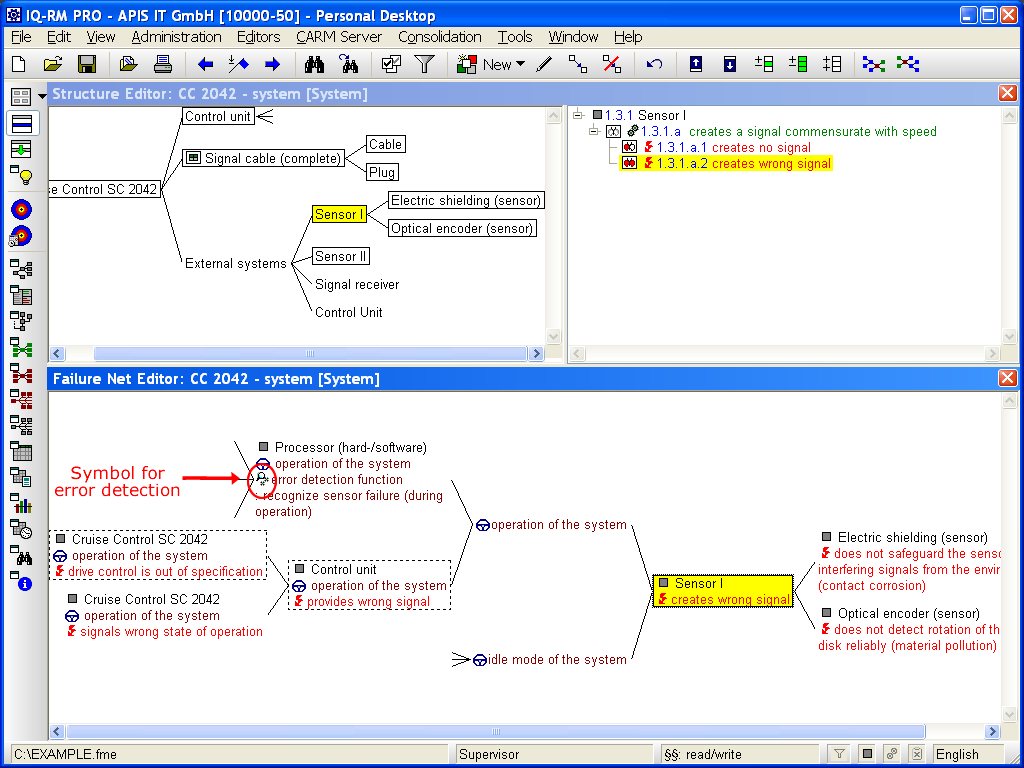
However, if a failure detection is activated, a failure reaction can be triggered which causes the system to continue operation in a fail safe mode.

Since failure detection and failure reaction are derived from functions it is possible to perform a risk analysis for them as well (“what will happen if detection doesn’t work”).
Operating states, failure detections and failure reactions may be combined with each other within the failure net and are independent from each other. For example it isn’t implicitly necessary to include operating states into the analysis if only failure reaction of a system is to be reviewed.
Operating states, failure detections and reactions can be used as filter criteria. For example, in a failure net only paths with a certain failure detection or a certain operating state can be viewed and all others may be faded out.
Model Based Risk Analysis
In many cases, risk analysis is equated with the process of filling out an FMEA form sheet. But soon people find out that this approach is part of the problem and by no means a solution.
Even if the system or process under consideration is only moderately complex, and the form is not longer than a few pages, it becomes more difficult and in the long run it eventually becomes virtually impossible to produce a complete and consistent risk analysis.
Studies which we performed more than 20 years ago, when we started research for a unique way of performing risk analysis showed us, that people tended to confuse causes and effects, could not communicate their results to other people who were not members of the team that initially produced the form and did not understand their own form after a few weeks had passed.
Sound reasoning about failures in a system is only possible when the workings of the system are sufficiently understood by all members of the team. This means that risk analysis must be based on an analysis (or a model) of the system/process under consideration which is as abstract as possible and as specific as necessary. Whenever a failure is introduced, the team must be absolutely clear that it knows which function of the system fails. Also, the physical component which produces the function must be known.
The model which is the basis of APIS IQ-Software ensures that:
- for every failure the connected function is known
- for every function, the system or process element which produces this function is known
- the structure of the system or process under consideration is known
APIS IQ-Software has specialized tools (called “editors”) for every step of the analysis process. These tools are powerful as well as easy to use and they guarantee the consistency of the mode as required by the US AIAG (which is the equivalent to the German VDA). As this approach is in no way specific to the automotive industry, APIS IQ-Software also has a constantly growing user base in other industries, notably the Aerospace, Defence and Alternative Energy and Health Industries.
All tools of APIS IQ-Software operate on one unified model, without redundancy, that guarantees that an item of information is always up to date in all different views (forms) which the software supports, no matter where it is changed. So, if for example you change the process step number of a process step in the process flow diagram, this information will be immediately reflected in the control plan and in the FMEA form without any additional work.
VDA recommends that the analysis is performed in several steps; the following table gives an overview of the required phases and the tools of APIS IQ-Software that support this step.
| Phase | Goal | supported by |
|---|---|---|
| Structure Analysis | Identify the physical components of the product or process (“System Elements”) that produce the desired functions as well as their interdependence | Structure Editor Function- and Failure-Analysis (FMEA form) |
| Functional Analysis | Identify the functions of the system elements and their interdependence | Structure Editor Function- and Failure-Analysis Function Net Editor (FMEA form) |
| Failure Analysis | Identify the failures of the functions and their interdependence | Structure Editor Function- and Failure-Analysis (Function Net Editor) Failure Net Editor (FMEA form) |
| Risk Evaluation and Optimization | Identify the critical failures and define Action(s) to reduce overall system risk | FMEA form Structure Editor Function- and Failure-Analysis Function- and Failure-Analysis Failure Net Editor |
| Reporting and Controlling | Statistical analysis and presentation of the risk; controlling if the implementation of actions | Deadline Editor Statistics Editor |
| Data Mining | Reuse of knowledge (“Lessons learned”) | IQ-Explorer |
APIS IQ-Software does not require that these steps are performed in the order given above. However, this is highly desirable. Instead, it supports every process model (top down, bottom up or middle out) while always ensuring the consistency of the data. Just to name an example: you can have the software construct the function net based on a given failure net!
Multilingualism
In times of globalization it is vital for international companies to have multilingual user interfaces for their company software as well as having the possibility to maintain risk analysis in several languages. APIS IQ-Software offers a solution for both requirements.
Interface Language
Available in all extension stages of IQ-Software
The APIS IQ-Software is now available in 9 interface languages, among them two far eastern languages.

The interface language of the APIS IQ-Software can be changed during runtime of the software (“on the fly”, no new installation necessary) and without the need to exit the program.
Multilingual Data
Not available in IQ-FMEA cf.
Product comparison of APIS IQ-Software lets you translate your data into an unlimited number of languages. Languages for data are not limited to the number of languages available for the interface but are free to choose. In all Editors a bilingual presentation of the contents is possible. There are no restrictions concerning the editing of the data.
Support of Asian Languages
Also the support of Asian languages is ensured
Maintenance and translation can be done in any editor. However as a specialized tool within the APIS IQ-Software the editor “Terminology and Translation” is provided.
Translation Management Support
APIS IQ-Software supports the user in keeping the translations always up to date by finding objects with an out of date translation.
Support of External Translators
Also if the risk analysis has to be translated externally APIS IQ-FMEA offers a pragmatic solution. Data can be exported to a XLS file and then be translated in an excel table.
When external translation in Excel is completed the results can be simply brought back into the APIS IQ-Software.
Nonredundant Data Storage
Available in all extension stages of IQ-Software
If the same data is stored in multiple files (documents), the costs for keeping the data consistent multiplies with the redundant storage locations, e.g. every changed datum must be changed in all other files where it is required. This increases the potential for errors (inconsistent documentation).
The situation is quite common in companies where standard software packages (text processing, spreadsheets, diagramming software) are used for filling in the FMEA form, the control plan and the process flow. Often, a text processor is used for the FMEA form, a spreadsheet program for the control plan and a diagramming tool for the process flow; but all these documents share a certain set of data (e.g. critical characteristics). The time and money needed to keep these documents up to date is at least 300% more than required with APIS IQ-Software.
APIS IQ-Software internally uses a complete and normalized data model. This means that every information item exists only once, even if there can be a great number of different views (forms and other documents) where the item appears. Changing the item in one place (in one form) automatically updates it in all other views, because physically the item exists only once.
As an example consider the specification of a characteristic. The following figure shows the same product characteristic as in the function net and the process flow diagram.1
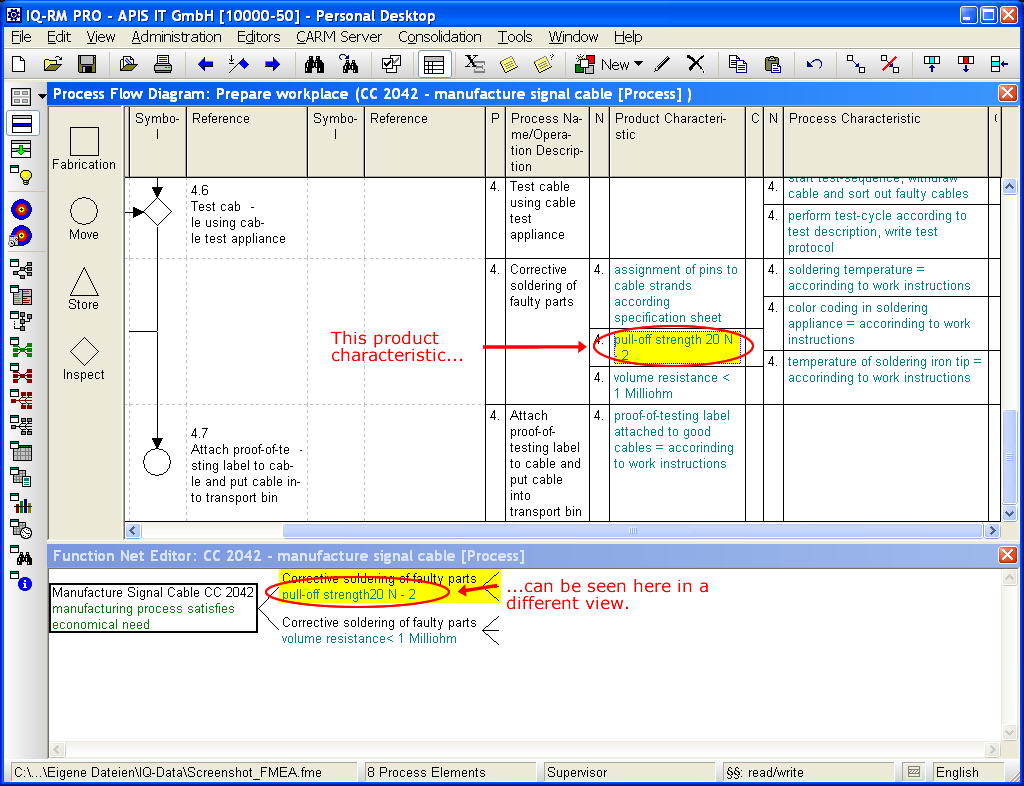
If the value of the characteristic is changed from 20 to 30 in one view, the change is immediately reflected in all other views that show this characteristic.

This is true not only for opened views but of course also for all views which will be opened after the change was made.
1 – Depending on the expansion stage, not all shown editors are available.
Presentation
Publishing Information
The huge amount of knowledge that can be acquired when using the APIS IQ-Software is best accessed and searched with the IQ-Explorer. But sometimes, part of the information must be presented to third parties which need not necessarily have access to the original data or are even denied access. In these situations, it is crucial to be able to print some or all of the data as conveniently as possible or to publish the data to the intranet.
These requirements are implemented by the Presentation Print and the Web Publisher; publishing for the web can also be automatic.
Presentation Print
Presentation Print allows you to print a collection of documents in one batch on one or more output devices. To do this you first define the views, their contents and – in case of print – the output device(s) that should be used in the print batch. The information is organized hierarchically for easier selection. For every entry, settings can be stored (e.g. font, header and footer settings).
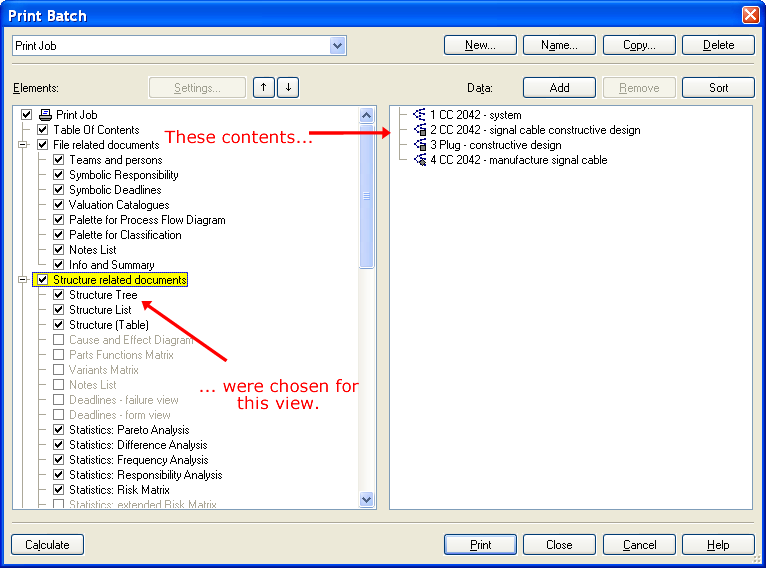
The grouped editors (views) can be linked to one or more sets of data. e.g. structure trees, forms, failure nets and function nets.
The configuration of views, contents and output devices (print jobs) can be named, saved and are thus available for quick future reuse. When reusing a named print job, the current contents of the document(s) are used. This guarantees that your printed documents are always kept up to date no matter how large they are.
For the Presentation Print any installed printer can be used for all selected editors. It may also be a PDF printer.
Web Publisher
The Web Publisher creates an indexed website. (example website – the example was created form the provided example file). The website has in integrated text search feature. Using the index page each single view can be accessed directly. Moreover, the web pages (contents) are grouped by their type (e.g. failures, preventive and detective measures) and linked to the locations in the documents where the corresponding contents can be found.
Automated Publishing
The CARM Server can store and schedule jobs for the Web Publisher as well as the Presentation Print. The job schedule can be defined by the administrator. It is also possible to define source and destination directories independently. Thus all FMEA data accessible to the server can be published.
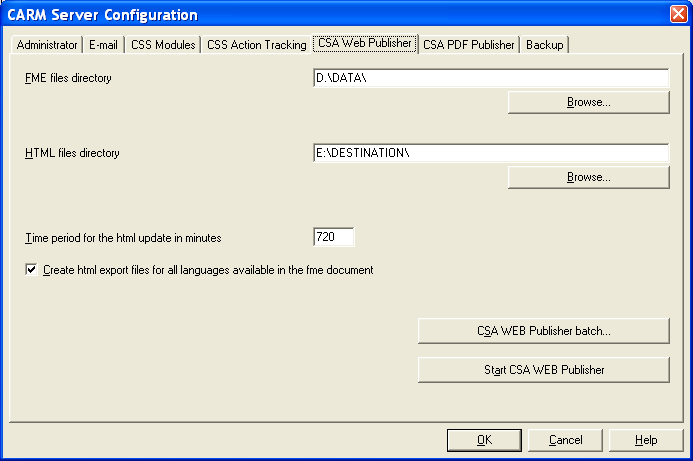
The server ensures that files only get republished if the source file has been changed and new timestamps exists. Thus completely automated reports can be stored in the company network on a daily basis. For audits, meetings and other sharing, it is only necessary to have access to the destination folders used by the server.
Search & Find
Available in all extension stages of IQ-Software
If a company is doing risk analysis thoroughly they gather a lot of experience over time which can be used in further projects. The requirement for this however, is that existing knowledge is reused. This again requires that previous knowledge is retrievable. Flexible and powerful tools as provided by APIS IQ-Software are essential.
The simplest and most common method to do so is by selecting text search which is available in all IQ-Software editors and offers a wide variety of additional functions.
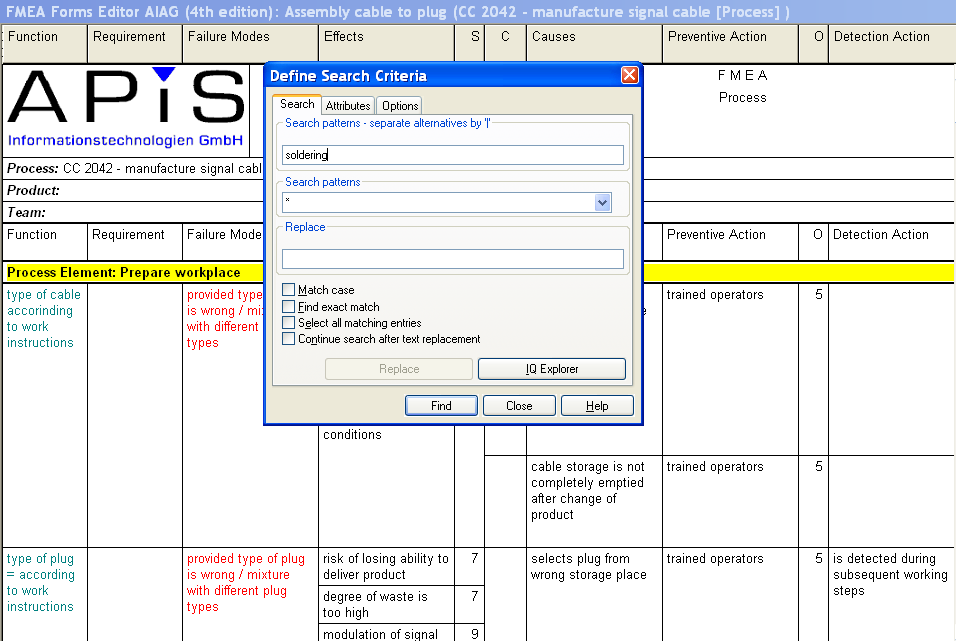
However, a text search is never capable of retrieving contextual (semantic) dependencies. Only if this is possible one can talk of a knowledge-based search as it is offered by IQ FMEA.
Since IQ-Software knows about contextual dependencies and uses them for searching, detailed search requests are possible.
E.g.: Search for all requirements with deadline before 1st of May 2009 whose RPN is greater than 225 and whose Occurrence and Detection rating are greater than 4.
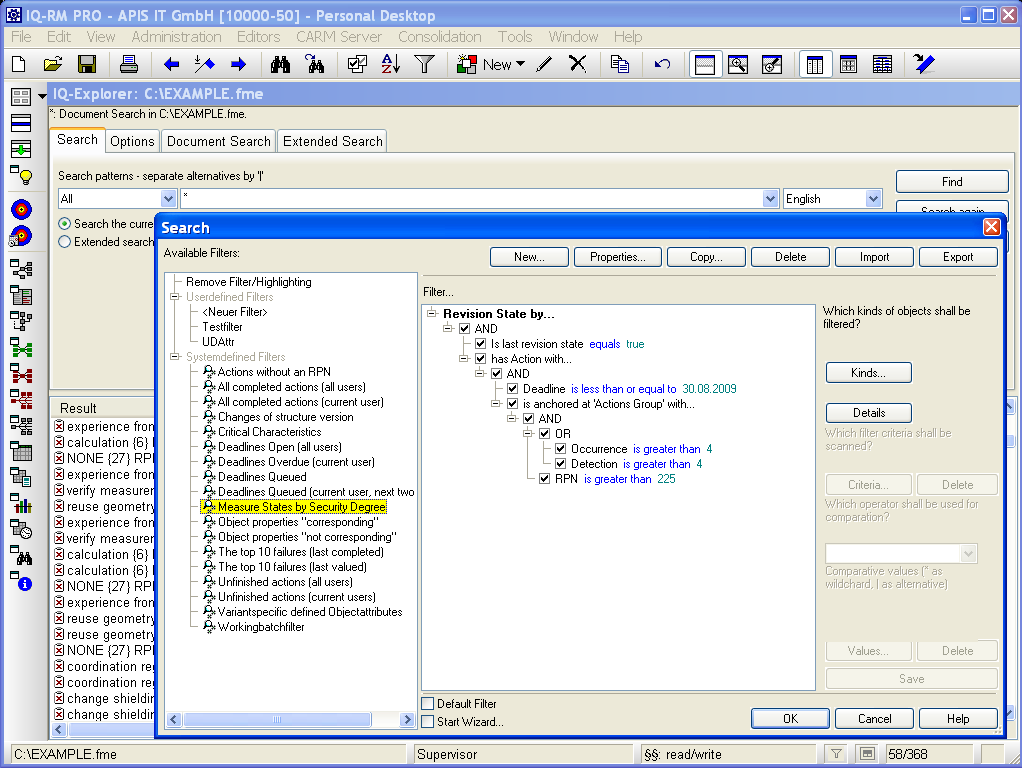
The software provides more than 50 predefined queries (also called filters) by default.
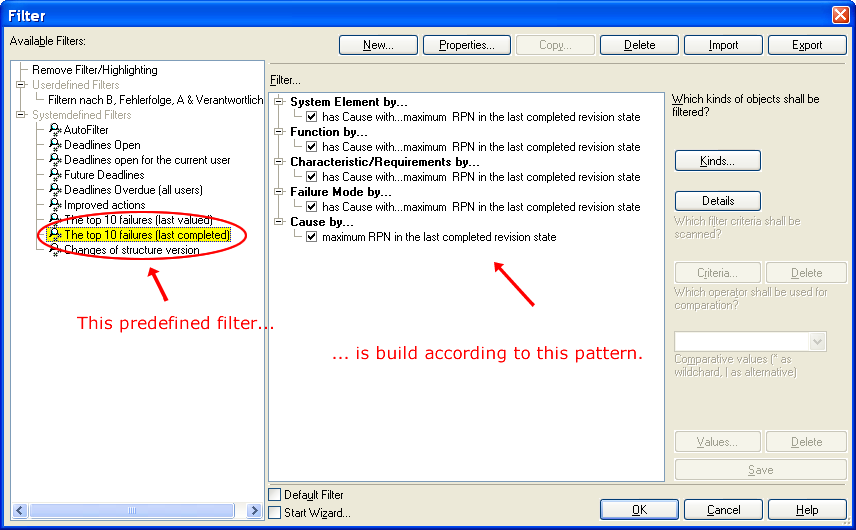
The filter pool can be adapted and extended to own user needs since filters can be named and saved and thus be reused at any time.
To search filters are used for two different tasks:
- To filter within the editors to reduce the amount of displayed information.
- Search with the help of the IQ-Explorer.
Filter Highlight
In this case filters are used to keep large amounts of data manageable by only displaying data contents which match with the filter criteria (so to say ‘stay’ in the filter). All other data is deleted in this view.
- Form before filter application and with a filter which is supposed to filter for Actions in progress:
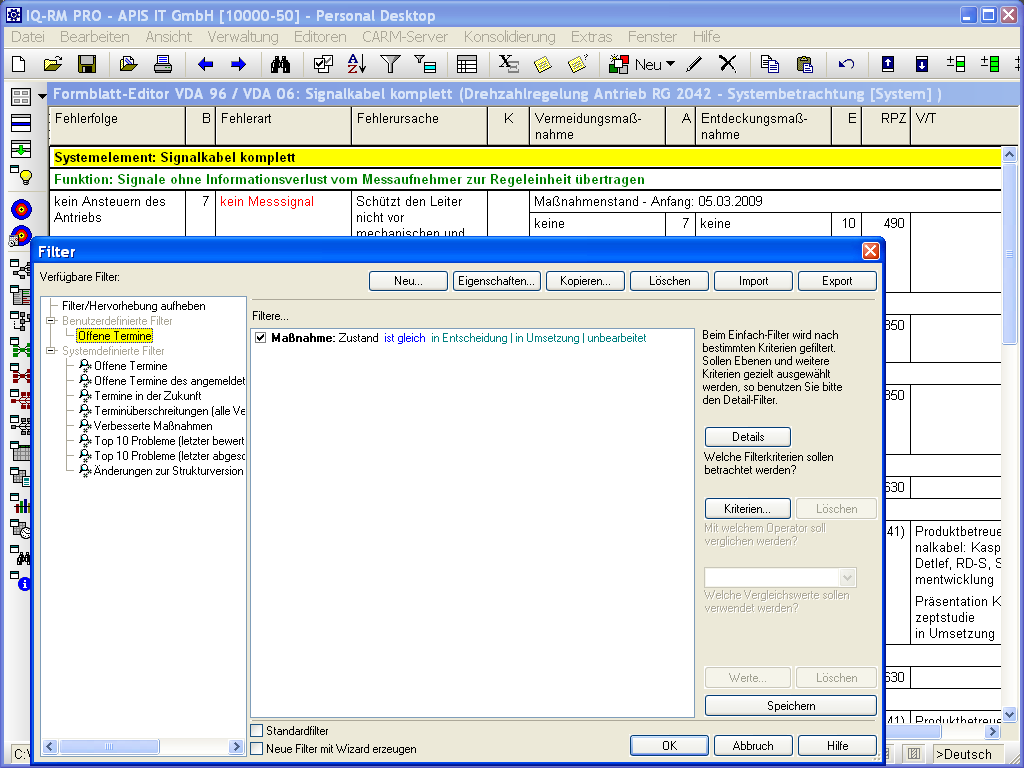
- Form with a reduced amount of data after filter application:
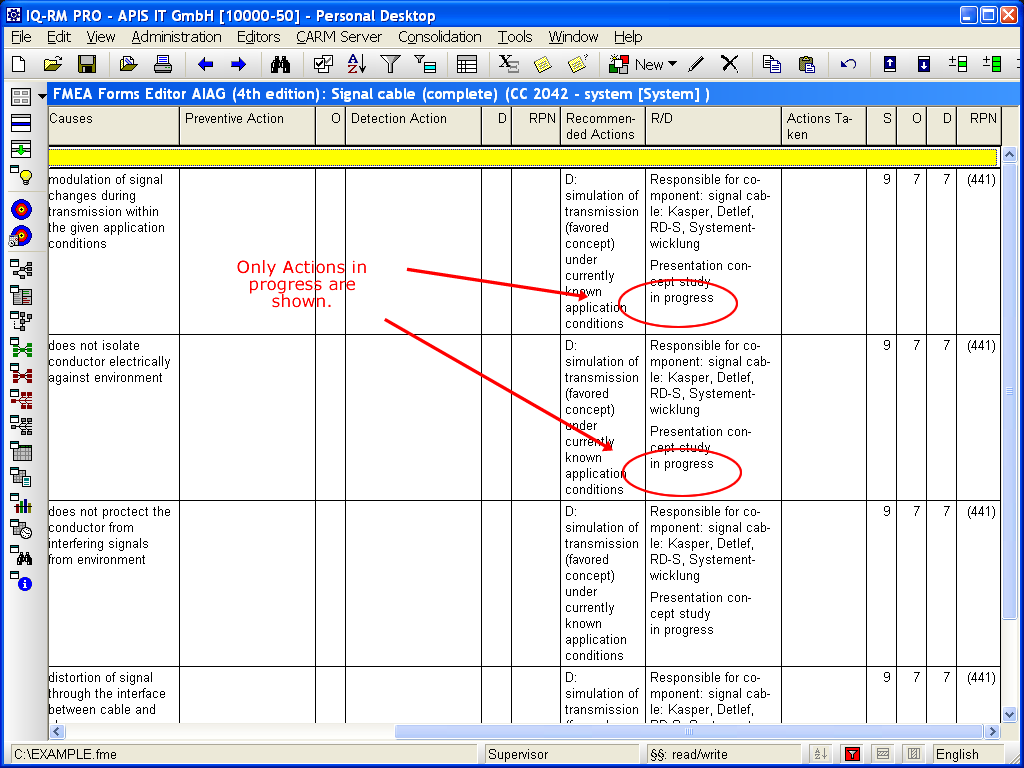
Alternatively, you can set the masking aside and only highlight the search results:
- Form before highlight application with a filter which is supposed to filter for the Actions in progress:
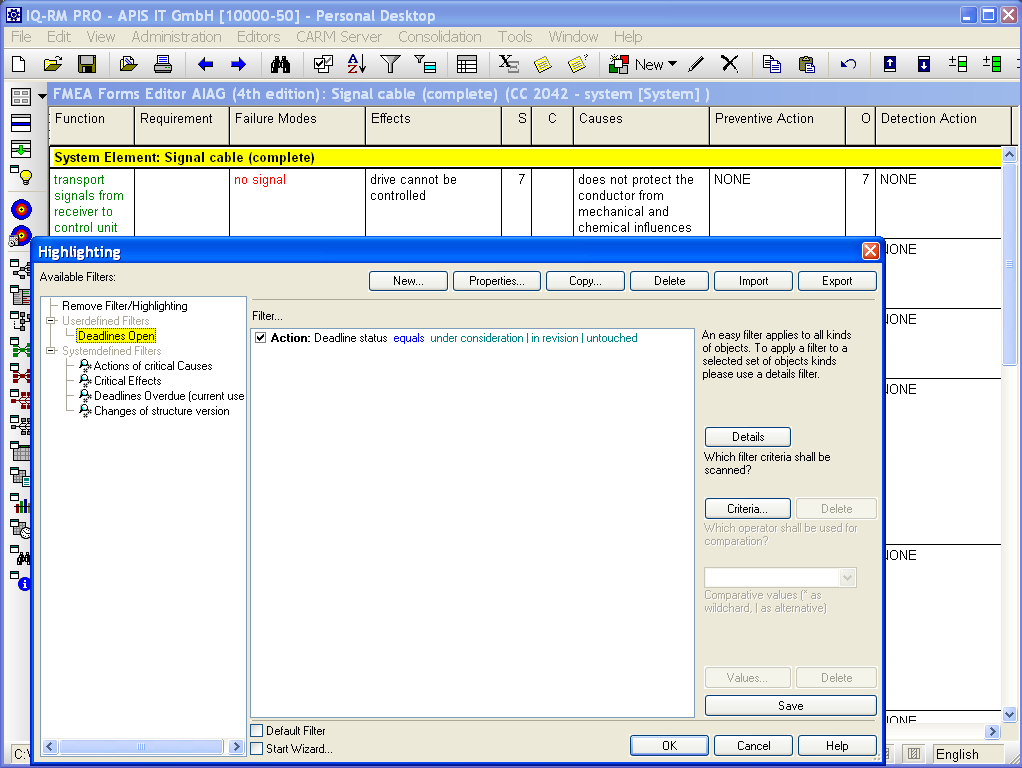
- Form after hightlight and filter application:
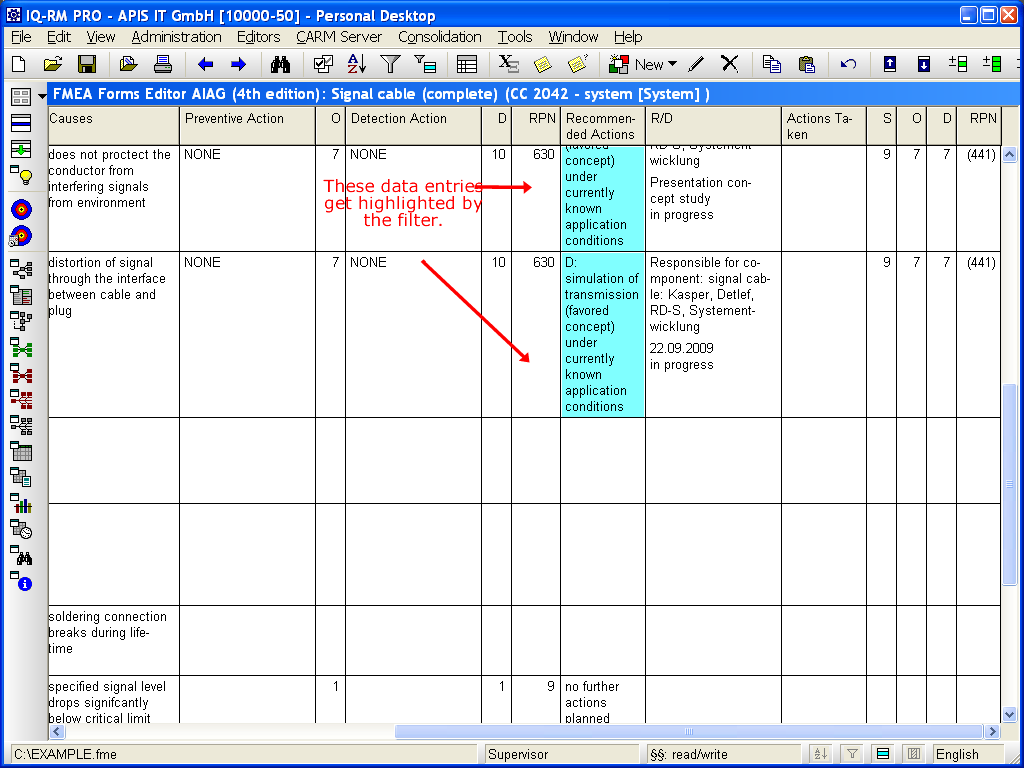
IQ-Explorer
Search within the IQ-Explorer can either be applied to the currently open document or to the whole file system of the currently used computer or linked network resources. The result lists created from the search results can be saved and opened again at a later point. Moreover they can be exported as HTML file or CVS file. Thus, to-do lists, lists for responsible persons etc. can be created fast and be extended over several documents. For example for a company-wide result list for due requirements the responsible persons can be informed via email.
Each reference in the result list can further be presented with contextual information via the so called info table. Printing the described views is of course also possible.

Simultaneous Engineering
Available for pro version of IQ Software
The Simultaneous Engineering tools of the APIS IQ-Software offer several possibilities that let the members of a risk analysis team work independently on a common set of data without the need of additional IT infrastructure or a central database system.
Simultaneous Engineering supports different application scenarios which differ in the amount of information to be shared among the users. Simultaneous Engineering is based on the tried and tested document-centered approach of IQ Software.
If all team members are supposed to have unrestricted access to all information in a document, Cloning and Consolidating is the choice solution.
If only pieces of information of a document are to be shared, Collaboration Interfaces should be used.
Cloning & Consolidating
This technology will be used if all team members are allowed unrestricted access to all information in a document. For example, the team members might be responsible for different sub-areas of a larger system, and each member of the team wants to be able to work in these sub-areas while still having access to all other parts of the document.
For every team member, a special type of copy of the master document (a clone) will be created. These clones can then be modified; as the clones are just another type of documents, the usual advantages of the document centered approach still apply. The document can reside on a laptop or be accessible in a company network, it can be sent by email, managed by a document management system and so on.
The master document (or primary document) has a special role in this process. It remembers all clones that were created as well as date and time of the cloning and the receiver of the clone. Also, only the owner of the primary document can consolidate with any of the clones.
Consolidation is a two step process. First the clone is compared with the primary. Any changes found in the comparison step are represented to the user who can then decide what to do with the changes (accept, reject or modify them). In the next step, the differences are applied to the primary document which now contains the union of the changes in the clone and in the primary. By creating a clone after consolidation, the clone owner and the primary owner again have the same data to work with independently.
This approach offers all involved persons the greatest flexibility with minimal administration effort.
Here is a simple scenario as an example. A company develops a product which consists of complex parts. Different people within this company are responsible for the different areas and are supposed to develop a FMEA. It is appropriate to develop a basic structure of the FMEA centrally and then create clone documents which are further developed by the specialized personnel. At a designated point the cloned documents are consolidated with the primary document and all (valid) changes and additions made to the documents are part of the consolidated result document.
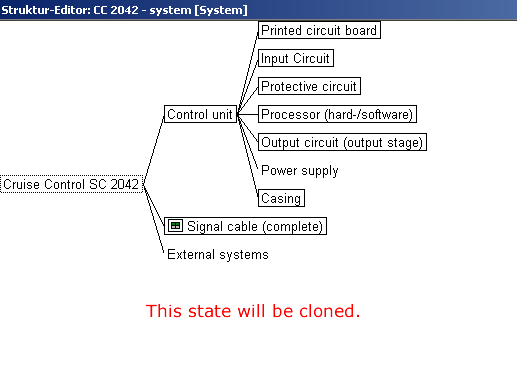
The original document is supposed to be modified by a minimum of two teams simultaneously.
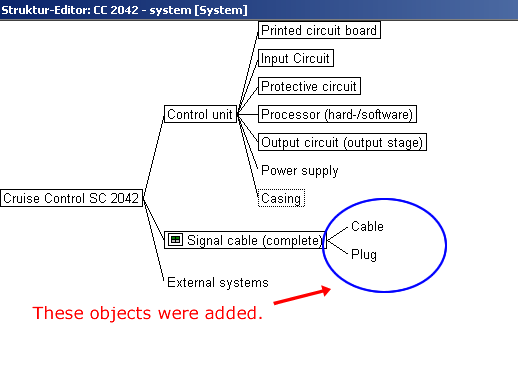
In the primary document the structure element ‘signal cable(complete)’ is modified.
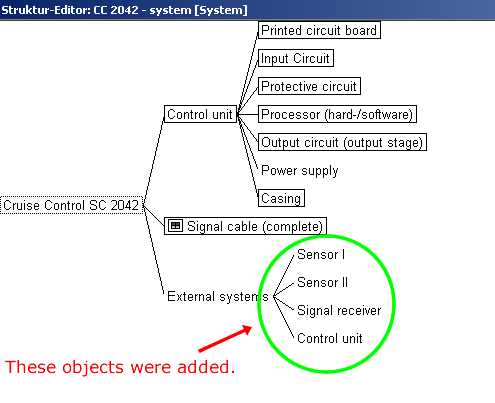
In the clone document the structure element ‘external systems’ is modified.
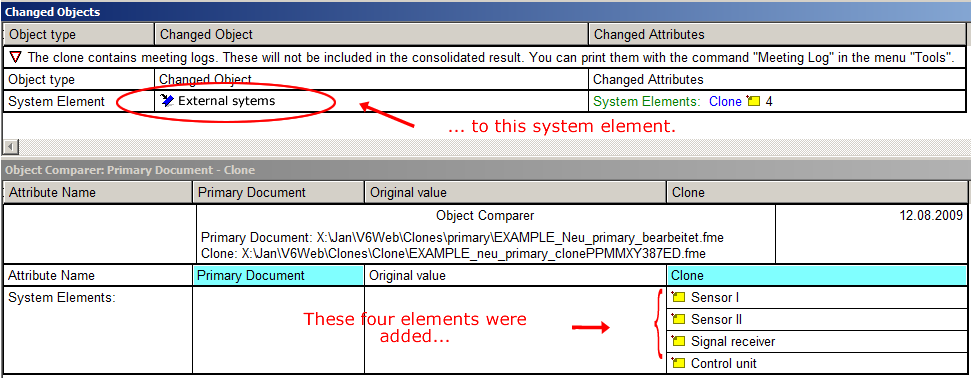
Within the consolidation desktop you see the four added structure elements.
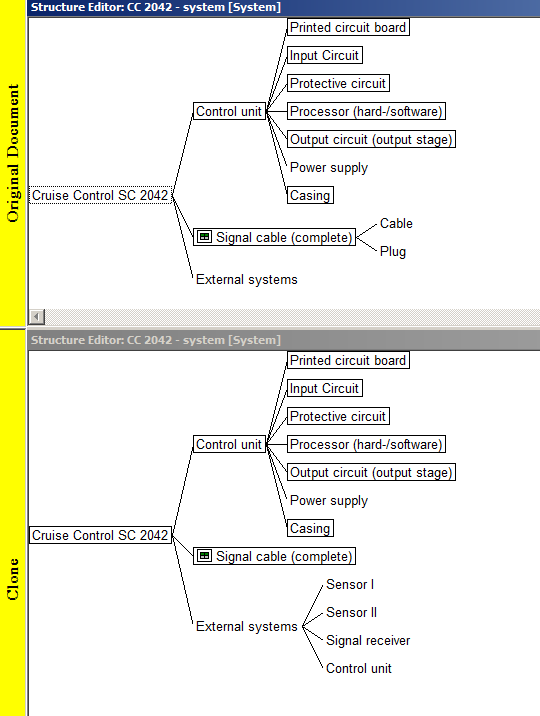
In the result document the changes made within the clone document and the changes from the primary document are consolidated.
Terminology control
Available in all extension stages of IQ-Software
For optimal information reuse (“lessons learned”), the wording for the same things must be the same. If one person calls a leakage an “elusion” and another team member calls it “ooziness”, those two will have a hard time when they try to learn from each other. APIS IQ-Software offers many solutions to cope with such a problem.
Terminology Control when Entering Data
This is supported by catalogs (of functions, failures, actions…) that can be used when entering data in the input collector.
The bottom window of the input collector shows all function texts, failure texts that have been entered before. The user can search this list (including incremental search with wild cards) and reuse suitable entries.
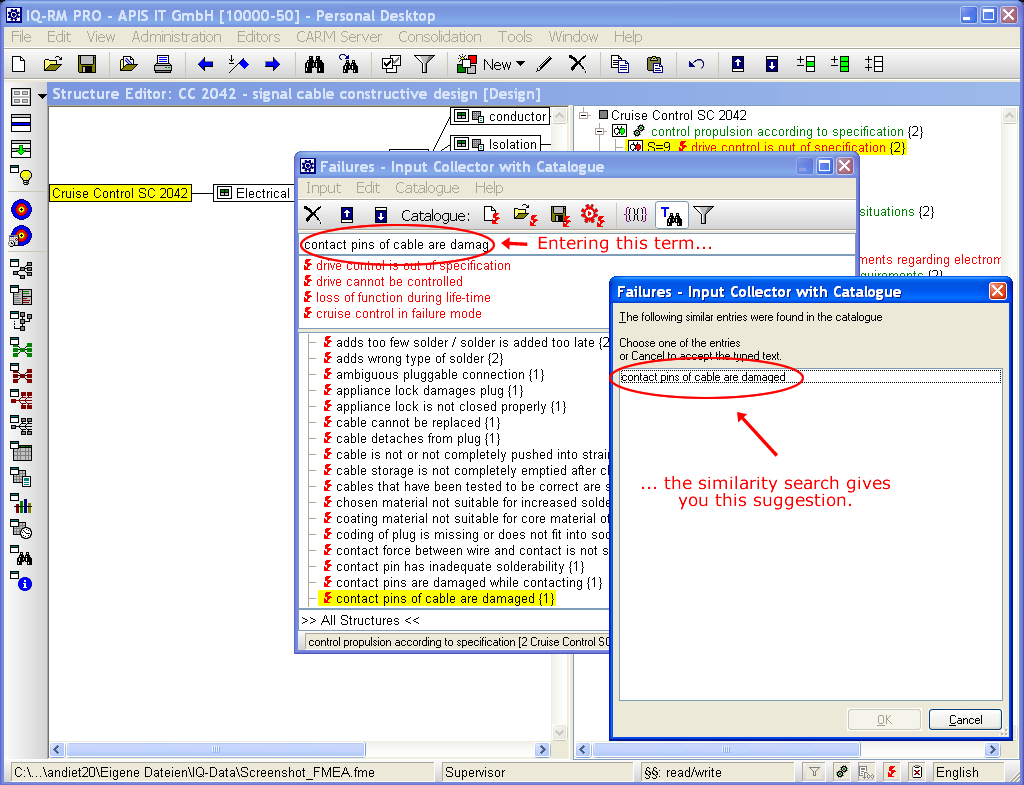
In addition, a similarity search can be turned on to find entries with different spelling.
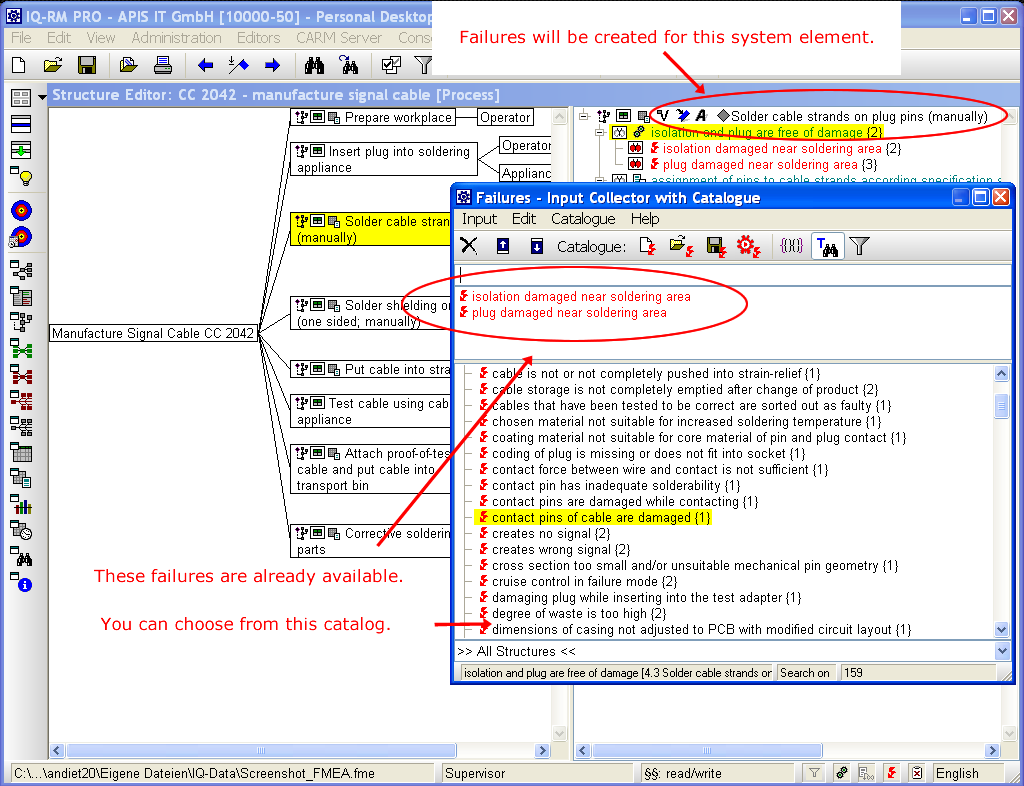
These catalogs are available for functions, failures, preventive actions, and detection actions.
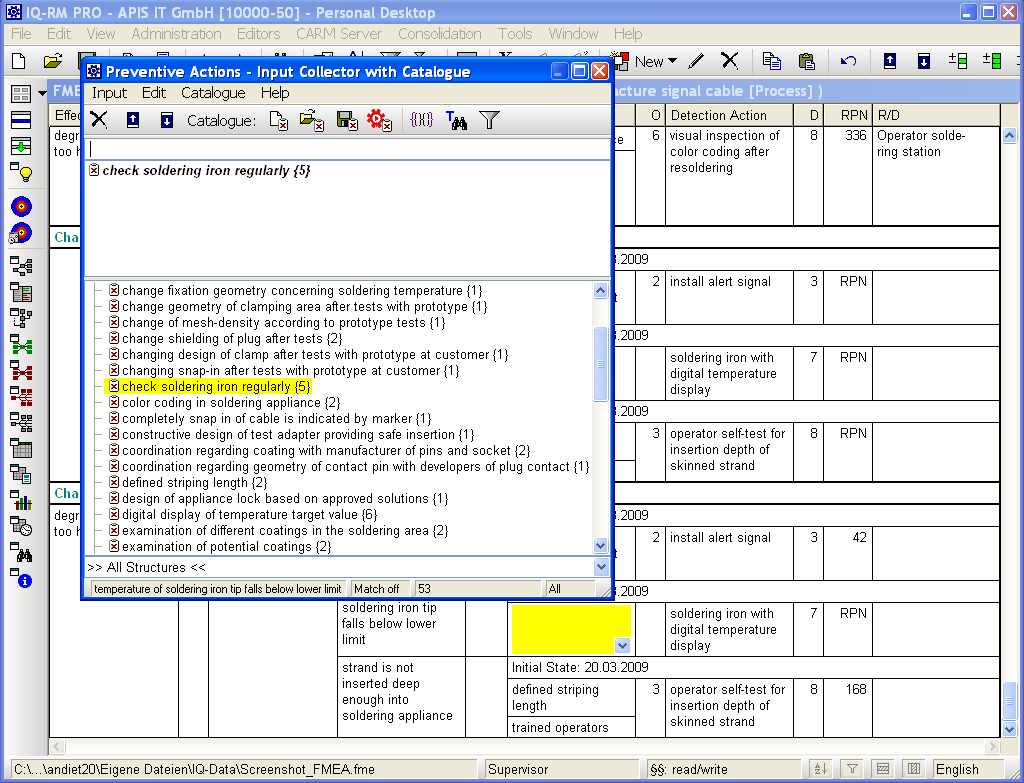
External Catalogs
There are various ways to include existing catalogs from text files or from a centralized server (CARM-Service Catalogs).
Administration of Terminology
This is done in the Editor for Terminology and Translation. Changes in this editor are automatically reflected in all documents which use the changed term(s). When different words have been used for the same function/failure/action, these phrases can be merged into one identical phrase which will then show up wherever the other differing phrases were used. This editor is also the tool for maintaining translations of the data to different languages (including Chinese, Japanese, and Korean).
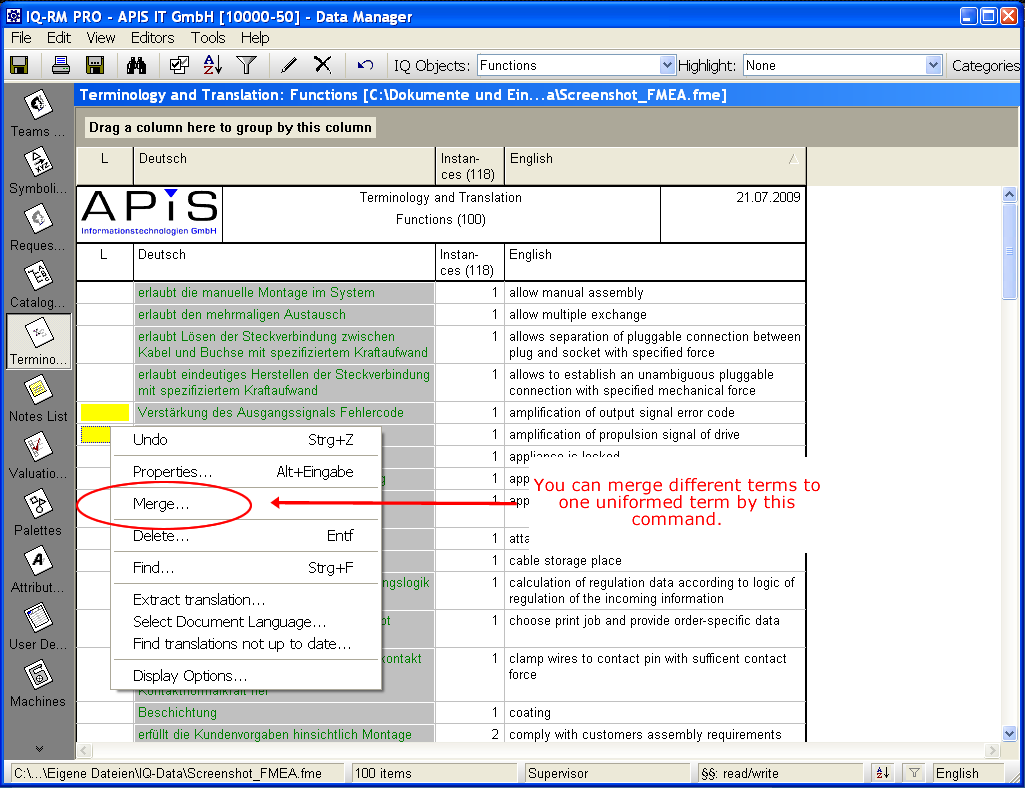
Big lists of phrases can be categorized for ease of use. These categories can also be used in the input collectors.

Inheritance
If new failures are defined for a reused function, the system asks the user if these new failures should also be copied over to the other occurrences of the reused function. This is called “inheritance”.
Total Cost of Ownership
Roll Out & Maintenance
Installation of the software is very simple. There are two different ways to do it. The first is to use the familiar install procedure which is well known from many other standard applications. As the software is self contained and does not need any additional packages (e.g. database systems), this usually is a matter of seconds.
In addition there is a silent install; this is targeted to the system administrators of larger companies. As APIS uses the standard package (MSI: Microsoft Installer), support of and adaptability to standard software maintenance systems is guaranteed. For ease of distributing new releases of the software, the program files can be installed on a single directory in a company wide network (“network license”). Local installation (say on laptop computers) can be easily maintained through a software management system using.
Focusing on the Company’s Core Business
Many companies have started building their own risk analysis tools using standard office products with their word processors, spread sheets and diagramming tools. But they soon realize that the built in features of office tools are not sufficient for a good, let alone sophisticated risk analysis. No spreadsheet knows the relationship between a failure cause and its effects. If a search in the data is to be done based on these relationships, or if statistics detailing the risks in a system or process must be produced, word processors and spread sheets are little or no help.
On top of this, companies start to develop their own macros in the macro language of the office product, a task which soon tends to get out of hand. Instead of doing risk analysis, people are trying to teach an office suite new tricks it was never meant to do.
APIS IQ-Software has been on the market for over 20 years, during which it has consistently set the highest standards for advanced risk analysis software. It is maintained by a team of very experienced computer scientists which are also experts in the field of risk analysis. The product has a very broad customer base all around the world and is thus guaranteed to satisfy every need of even the most demanding customer.
Scalability
The question whether a risk analysis system should be based on a standard database system often is discussed controversially.
Standard database systems provide access to a shared knowledge base to all users that are connected to the database system. But this comes at a price: the application has to be aware of conflicting accesses (several users trying to modify the same data item in different ways) and this awareness permeates the architecture of the system and tends to greatly degrade system performance and responsiveness. Also, access rights have to be managed inside the database system, which is an additional burden to the administrators and can become a nightmare, as some have found out.
Also, it often turns out that sharing ALL information is not only unnecessary but often unwanted.
APIS takes a different approach which always guarantees the best solution depending on the customer’s demands. This is done by providing two product lines for different demands which can be seamlessly integrated.
The client software stores information in documents (files); this approach is well known from word processors or spreadsheets. It is simple to install and maintain and does not need additional IT infrastructure (databases). The client software is simple to use and maintain and powerful at the same time. A sophisticated knowledge mining tool (IQ-Explorer) can search through all files accessible to a user for better reuse of data. The client software also allows several members of a team to work on the same data at the same time through File Cloning.
Only if you know that you need to manage and administrate a company wide body of knowledge you should start using the server software (CARM Server). The CARM server extracts data from the documents produced by the client and distributes this data to other clients for a number of different reuse scenarios and applications. This might be as simple as the automatic timer based creation of PDF documents and as sophisticated as managing a version controlled central knowledge store.
MSI = Microsoft Software Installation
MSP = Microsoft Software Patches
Variants
Available in all extension stages of IQ-Software
Variants are a simple, powerful and tried-and-true way for analyzing the risk in process or product variants without introducing data redundancy.
For every system or process, an unlimited number of variants can be defined. These variants are based on a master structure, which is the set of all the data that are included in any variant. The variants are derived from the master by excluding master objects which are not part of the variant or by assigning variant specific attributes to the objects. Changes to an object which is included in one or more variants are automatically reflected in all the variants.
The following figure shows the master structure of a plug that is produced in two different variants: with soldering connection or with clamp connection.
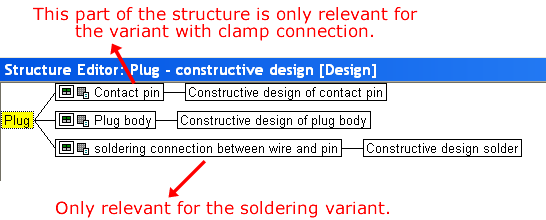
If the soldering variant is activated the structure looks like this:

If the clamp connection variant is activated, the structure looks like this:

The next example shows that the attribute values of objects can also be variant specific. The production process of the example can be with or without rework depending on the variant. Changing the variant does not only change the contents of the structure but also the status of actions.
The Object Inspector provides a concise overview of all variant specific values of an object:
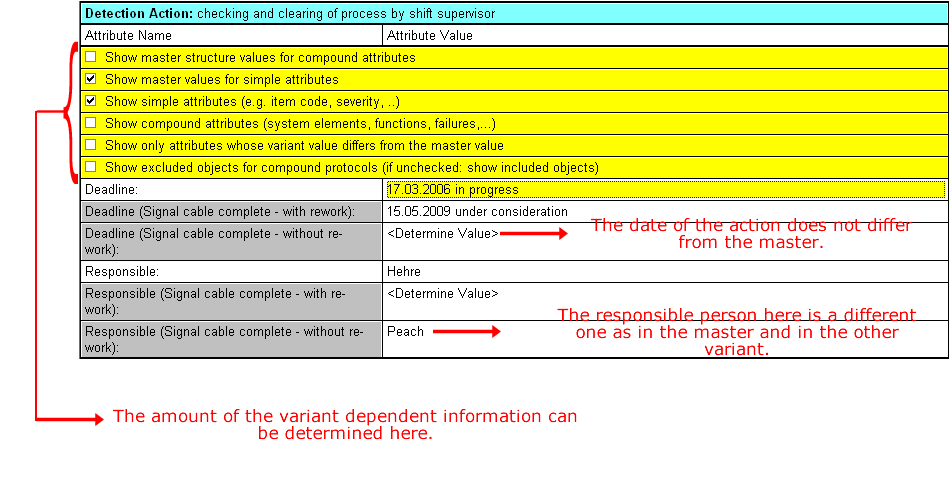
The following is an overview of the most important variant specific attributes:
| Object | Variant Specific Attributes |
|---|---|
| System or Process Element | Symbol for Process Element (PFD) Item Code Machines |
| Function | Classification |
| Characteristic | Operator Value Unit Deviation Classification |
| Failure | Severity Classification |
| Action Group | Occurrence Detection |
| Action | Responsible Deadline |
| All forms (FMEA, CP, PFD) | Items in headers and cover sheets. |



